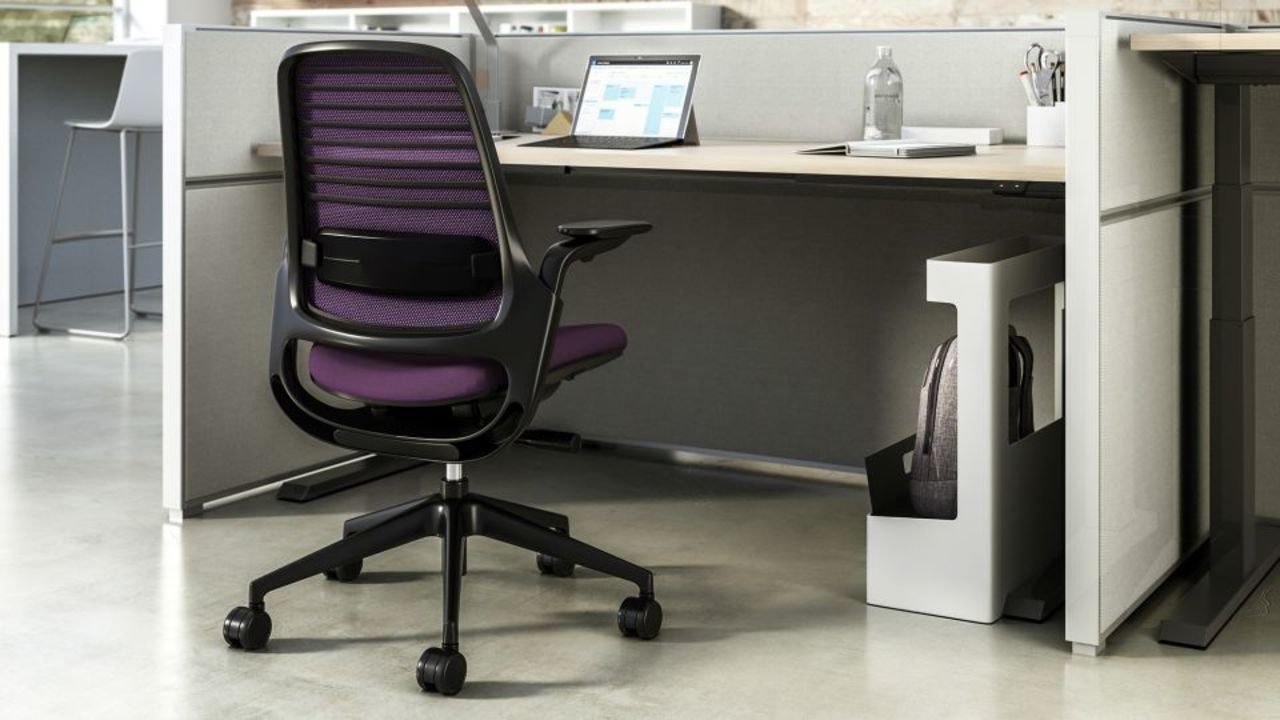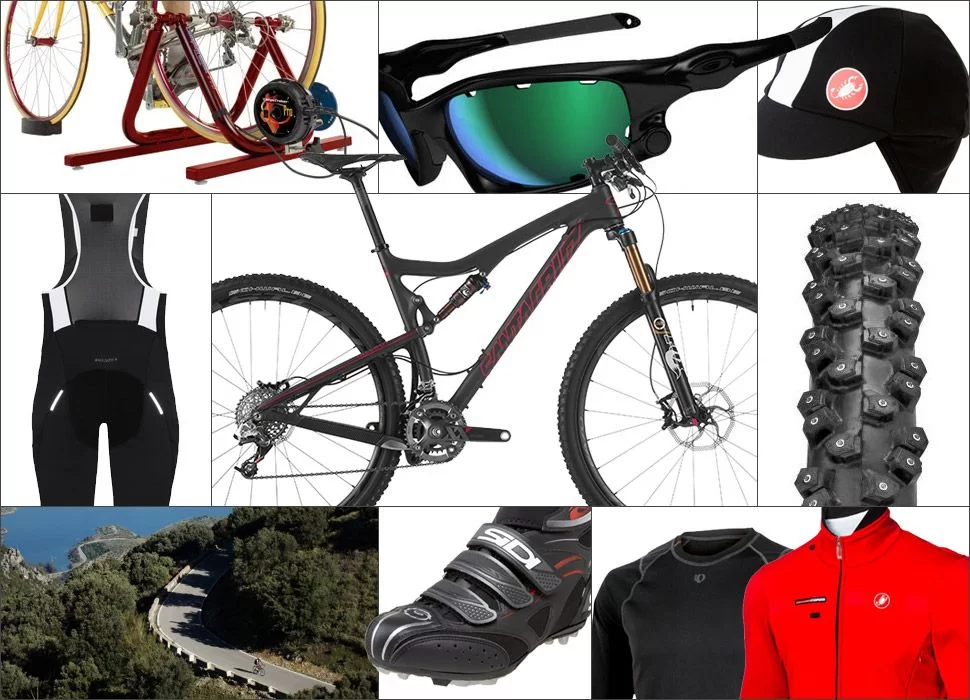
Carl’s Golfland: Your One-Stop Shop for All Things Golf
For the avid golfer, the pursuit of the perfect swing, the thrill of a well-placed shot, and the camaraderie of the course are experiences that fuel a lifelong passion. And for those who share this love of the game, finding the right equipment and accessories […]
Home & Garden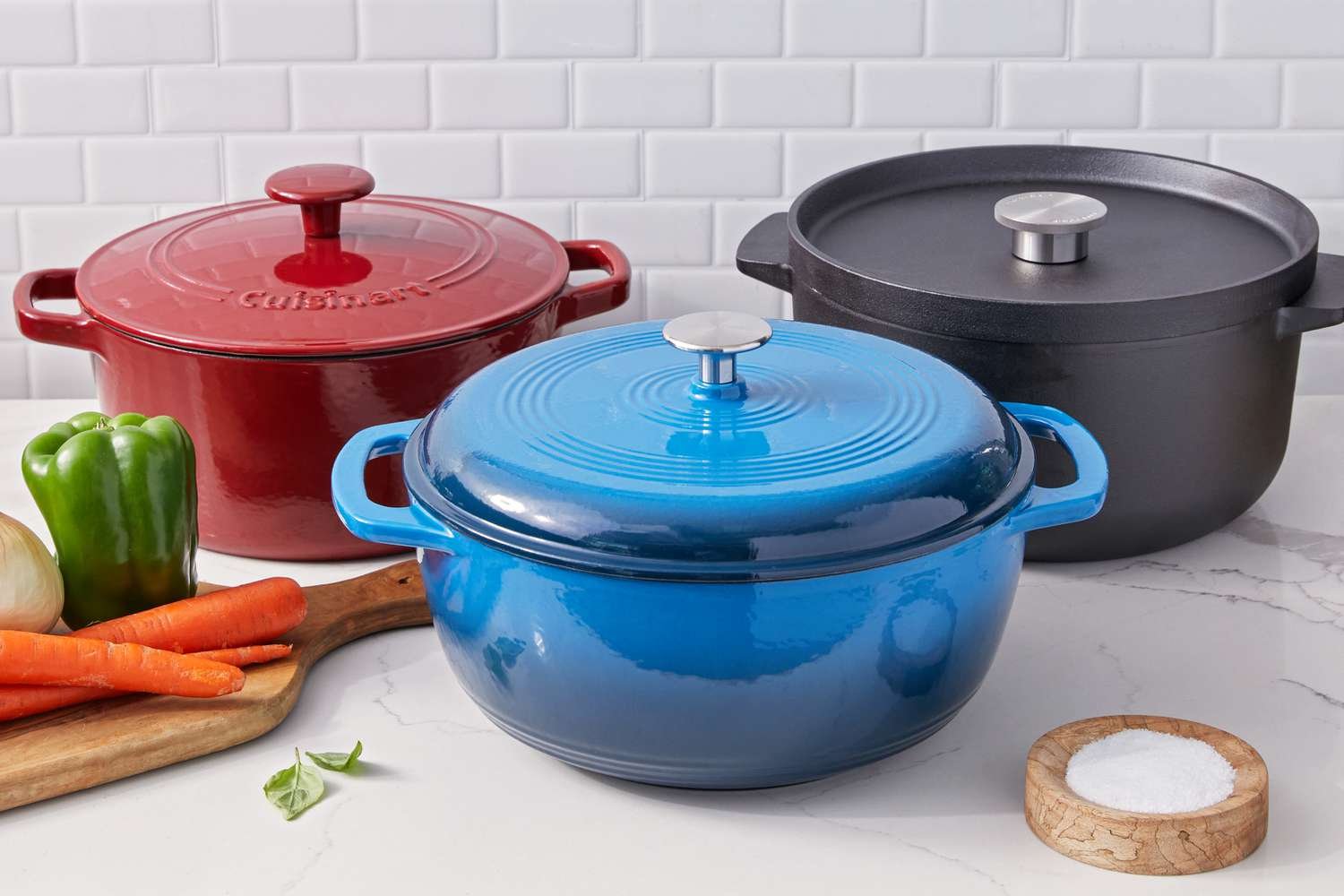
The 4 Best Dutch Ovens of 2024
Introduction:Dutch ovens are a beloved kitchen staple known for their versatility and exceptional heat retention. These timeless cooking vessels have stood the test of time and continue to be cherished by home cooks and professional chefs alike. In this blog post, we present the four […]
Home & Garden
Sun & Ski: Your Gateway to Adventure, From Mountain Peaks to City Streets
Sun & Ski has become synonymous with outdoor adventure and sporting goods, offering a comprehensive selection of gear and apparel for every season and every activity. But does this well-established retailer truly live up to the hype? Let’s delve into what makes Sun & Ski […]
Home & Garden
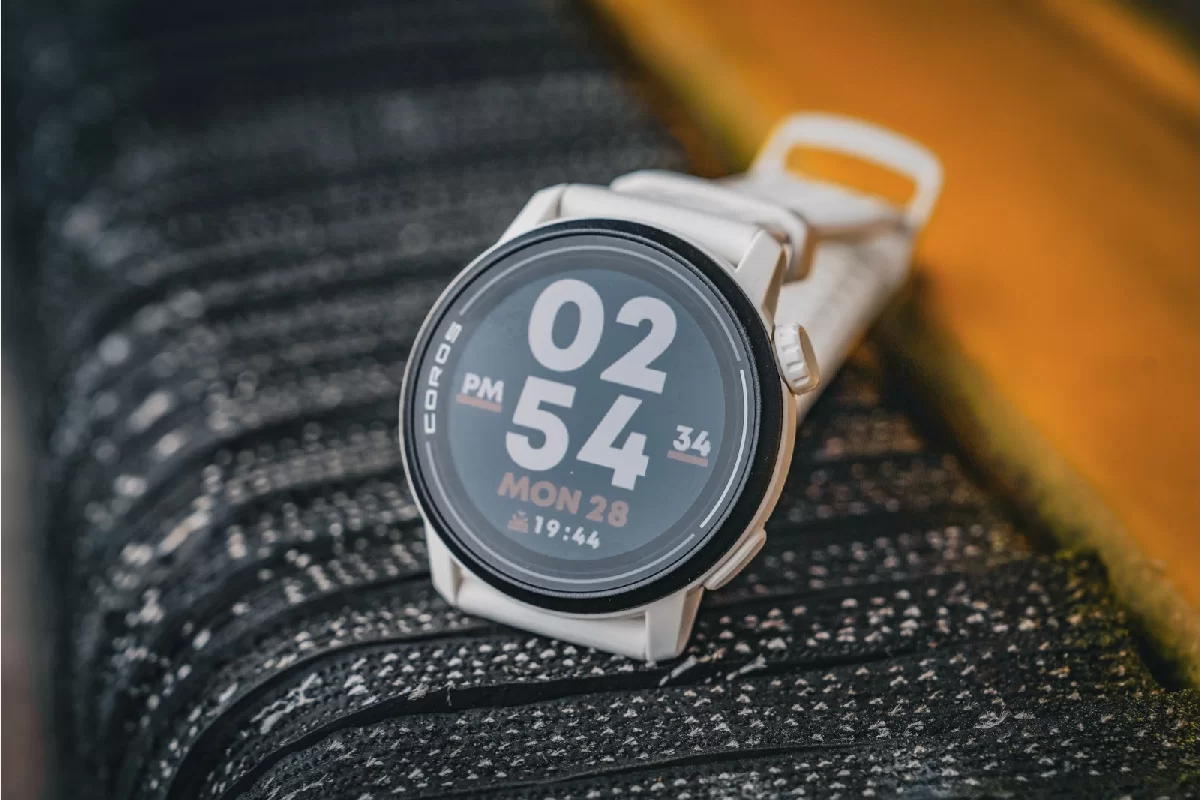

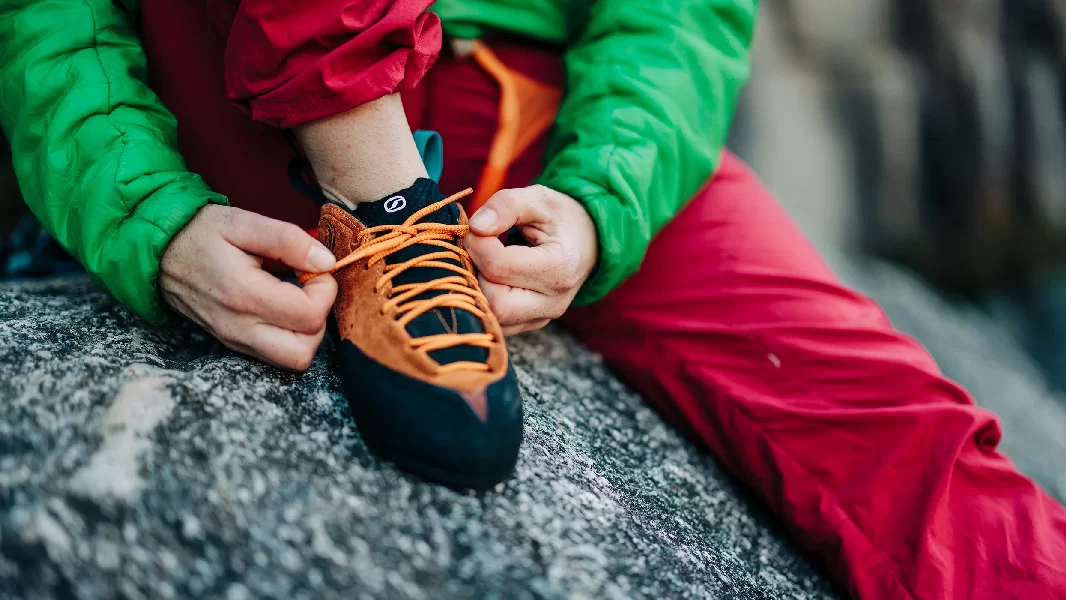
Best Rock Climbing Shoes for Kids of 2024: Encourage Adventure and Skill Development
Introduction:Rock climbing is an exhilarating and challenging sport that offers numerous physical and mental benefits for children. As young climbers embark on their vertical journeys, having the right pair of rock climbing shoes is essential for their safety and performance. In this blog post, we’ll […]
Home & Garden
Introduction:
Rock climbing is an exhilarating and challenging sport that offers numerous physical and mental benefits for children. As young climbers embark on their vertical journeys, having the right pair of rock climbing shoes is essential for their safety and performance. In this blog post, we’ll explore the best rock climbing shoes for kids in 2024. These shoes are specifically designed to provide comfort, support, and traction, allowing young climbers to explore their potential and develop their climbing skills with confidence.
- La Sportiva Stickit:
The La Sportiva Stickit climbing shoes are an excellent choice for young climbers. These shoes feature a comfortable and adjustable heel strap system that accommodates growing feet. The Stickit shoes also provide a flat profile and a durable rubber sole for reliable grip on various rock surfaces. With their easy-to-use hook-and-loop closure system, vibrant design, and quality construction, these shoes are ideal for young climbers who are just starting their rock climbing journey. - Evolv Venga:
The Evolv Venga climbing shoes are designed to meet the needs of young climbers seeking comfort and versatility. These shoes feature a unisex design and an adjustable hook-and-loop closure system, ensuring a secure fit for growing feet. The Venga shoes also boast a durable rubber outsole for reliable traction on holds. With their padded heel and tongue, breathable construction, and all-around performance, these shoes are suitable for both indoor climbing walls and outdoor crags. - Five Ten Mini Mocc:
The Five Ten Mini Mocc climbing shoes are a popular choice among parents and young climbers alike. These shoes feature a slip-on design with an elastic closure, making them easy to put on and take off. The Mini Mocc shoes utilize a Stealth rubber outsole, providing excellent grip on various types of rock. With their soft and flexible construction, these shoes promote natural foot movement and sensitivity, allowing young climbers to develop their technique and footwork skills. - Mad Rock Mad Monkey 2.0:
The Mad Rock Mad Monkey 2.0 climbing shoes are specifically designed for young climbers who are eager to progress and improve their climbing abilities. These shoes feature a comfortable and adjustable closure system that accommodates growing feet. The Mad Monkey 2.0 shoes also offer a rubber sole with good friction, ensuring reliable traction on holds. With their durable construction, supportive fit, and vibrant colors, these shoes are a reliable choice for young climbers as they tackle new challenges. - Butora Brava:
The Butora Brava climbing shoes are engineered to provide young climbers with a balance of comfort and performance. These shoes feature a unisex design and an adjustable hook-and-loop closure system, allowing for a secure and customizable fit. The Brava shoes utilize a sticky rubber outsole for reliable grip on various rock surfaces. With their padded heel and tongue, breathable construction, and durable build, these shoes offer young climbers the confidence and support they need to progress in their climbing journey. - Scarpa Kids Grip:
The Scarpa Kids Grip climbing shoes are an excellent option for young climbers who are serious about their sport. These shoes feature a supportive and comfortable design, with an adjustable hook-and-loop closure system to accommodate growing feet. The Kids Grip shoes also boast a durable rubber outsole for optimal grip and stability on holds. With their quality craftsmanship, precise fit, and reliable performance, these shoes are perfect for young climbers who are ready to take on more challenging routes and problems. - Black Diamond Momentum Kids:
The Black Diamond Momentum Kids climbing shoes are designed to introduce young climbers to the world of rock climbing with comfort and ease. These shoes feature a neutral shape and an adjustable hook-and-loop closure system, ensuring a secure fit. The Momentum Kids shoes also offer a durable rubber outsole for reliable friction on holds. With their breathable construction, comfortable fit, and user-friendly design, these shoes are an excellent choice for young climbers taking their first steps on the wall.
Conclusion:
Equipping young climbers with the best rock climbing shoes is essential to ensure their safety, comfort, and skill development. The best rock climbing shoes for kids in 2024, including the La Sportiva Stickit, Evolv Venga, Five Ten Mini Mocc, Mad Rock Mad Monkey 2.0, Butora Brava, Scarpa Kids Grip, and Black Diamond Momentum Kids, provide a range of options to suit different preferences and climbing abilities. With their adjustable closures, reliable traction, and comfortable designs, these shoes will encourage young climbers to explore their potential, develop their technique, and foster a lifelong love for rock climbing. Invest in a pair of these top-notch climbing shoes and watch your child’s climbing adventures soar to new heights. Happy climbing, young rock stars!
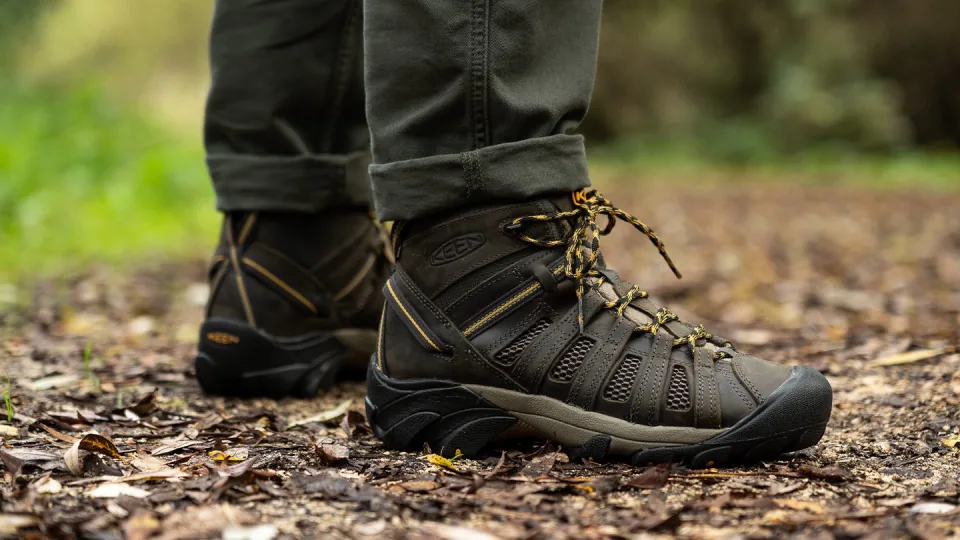
The 3 Best Mountaineering Boots: Conquer New Heights with Confidence
Introduction:When it comes to mountaineering, having the right footwear is essential for tackling rugged terrains, icy slopes, and extreme weather conditions. A reliable pair of mountaineering boots offers durability, traction, and protection to keep you comfortable and safe on your alpine adventures. In this blog […]
Home & Garden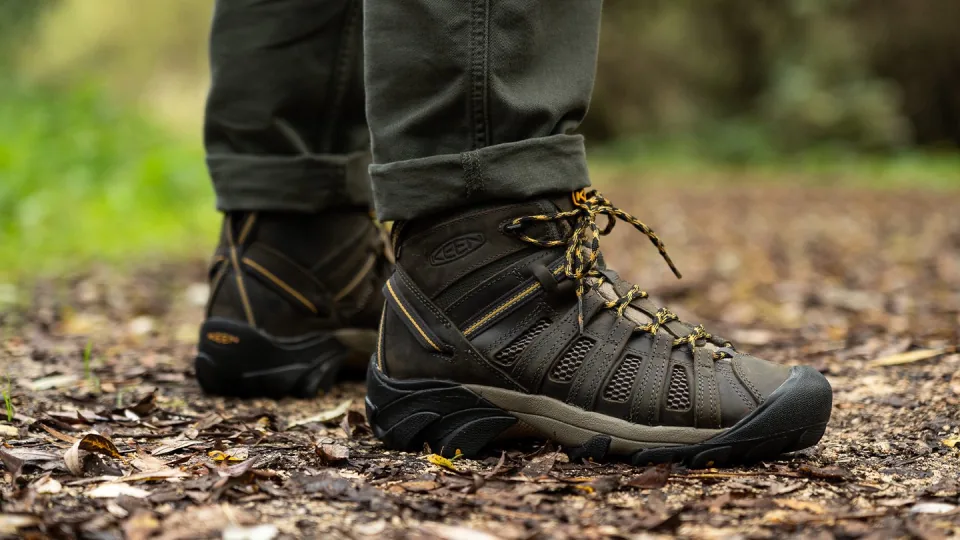
Introduction:
When it comes to mountaineering, having the right footwear is essential for tackling rugged terrains, icy slopes, and extreme weather conditions. A reliable pair of mountaineering boots offers durability, traction, and protection to keep you comfortable and safe on your alpine adventures. In this blog post, we will explore the three best mountaineering boots in 2024. These boots are specifically designed for mountaineers, providing the necessary features to conquer new heights with confidence.
- La Sportiva Nepal Cube GTX:
The La Sportiva Nepal Cube GTX boots are a top choice for mountaineers seeking exceptional performance and versatility. These boots feature a durable and lightweight construction with a combination of synthetic materials and a Gore-Tex membrane, providing excellent waterproofing and breathability. The Nepal Cube GTX boots offer a stiff and supportive sole for enhanced stability and crampon compatibility. The 3D Flex ankle system allows for freedom of movement while maintaining ankle support. With a combination of insulation and breathability, these boots keep your feet comfortable in a wide range of temperatures. The Vibram outsole with aggressive lugs ensures superior traction on various terrains. The La Sportiva Nepal Cube GTX boots are a reliable option for mountaineers tackling technical alpine routes and high-altitude expeditions. - Scarpa Mont Blanc Pro GTX:
The Scarpa Mont Blanc Pro GTX boots are known for their durability, warmth, and precise fit, making them an excellent choice for serious mountaineers. These boots feature a combination of suede leather and synthetic materials, providing both durability and flexibility. The Gore-Tex insulated lining offers waterproofing and breathability, ensuring comfort in harsh weather conditions. The Mont Blanc Pro GTX boots have a stiff yet comfortable sole for stability and crampon compatibility. The Sock-Fit Plus construction and lace-up system provide a precise fit and excellent ankle support. The Vibram outsole with aggressive lugs offers reliable traction on ice and mixed terrain. With their robust build and technical features, the Scarpa Mont Blanc Pro GTX boots are ideal for mountaineers tackling challenging alpine environments. - Salomon S/Lab X Alp Carbon 2 GTX:
The Salomon S/Lab X Alp Carbon 2 GTX boots are a lightweight and agile option for mountaineers looking for speed and performance in technical terrain. These boots feature a carbon-fiber upper and a Gore-Tex membrane, delivering a perfect balance of lightweight construction and waterproofing. The S/Lab X Alp Carbon 2 GTX boots offer a flexible yet supportive sole, allowing for precise foot placement and natural movement. The seamless construction and efficient lacing system provide a snug and secure fit. These boots also feature a climbing zone on the outsole for superior grip during vertical ascents. While they may not offer the same level of insulation as other boots, the Salomon S/Lab X Alp Carbon 2 GTX excels in technical mountaineering scenarios, ensuring agility and responsiveness on demanding alpine routes.
Conclusion:
Choosing the best mountaineering boots is crucial for comfort, protection, and performance during challenging alpine expeditions. The La Sportiva Nepal Cube GTX, Scarpa Mont Blanc Pro GTX, and Salomon S/Lab X Alp Carbon 2 GTX boots are among the top choices in 2024. These boots offer mountaineers a range of options to suit their specific needs and preferences. Whether you prioritize durability, insulation, versatility, or agility, these boots provide the necessary features, including waterproofing, traction, and crampon compatibility. When venturing into the mountains, ensure you have the right footwear to support you every step of the way. Choose the best mountaineering boots that suit your requirements and embark on your next alpine adventure with confidence, knowing that your feet are equipped to conquer new heights. Stay safe, enjoy the journey, and embrace the exhilaration of mountaineering!
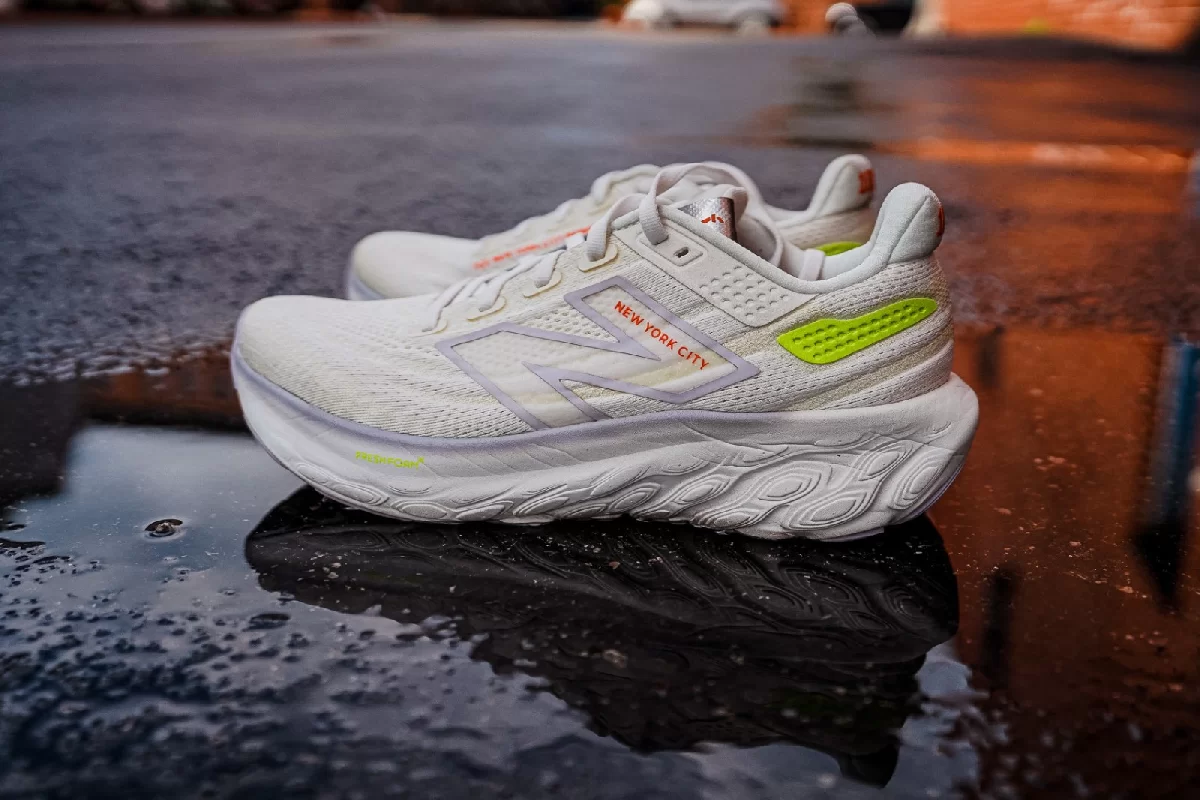
New Balance 1080v13 Review: Put Your Hands in the Air
INTRODUCTION TO THE NEW BALANCE 1080V13 MEAGHAN: It’s been a rollercoaster ride of emotions with the New Balance 1080. The flagship daily trainer/workhorse in the New Balance lineup, the shoe has seen its ebbs and flows over the last few years. Version 10? Amazing. Version 11? Horrible. Version 12? […]
NutritionINTRODUCTION TO THE NEW BALANCE 1080V13
MEAGHAN: It’s been a rollercoaster ride of emotions with the New Balance 1080. The flagship daily trainer/workhorse in the New Balance lineup, the shoe has seen its ebbs and flows over the last few years. Version 10? Amazing. Version 11? Horrible. Version 12? Ehhhhh. I kept my hopes high for lucky number 13, but honestly had no expectations. Would this new upper and midsole formulation get us back on the up and up? Or would our stomachs drop as we fell into another dip? Get your ticket and jump on the ride, and let’s see where this ends up.
THOMAS: Picture my hands up in the air as I ride the coaster with Meaghan cause I would agree that the 1080 experience has had its ups and downs. The good news is, the v13 has us excited to take a ride.
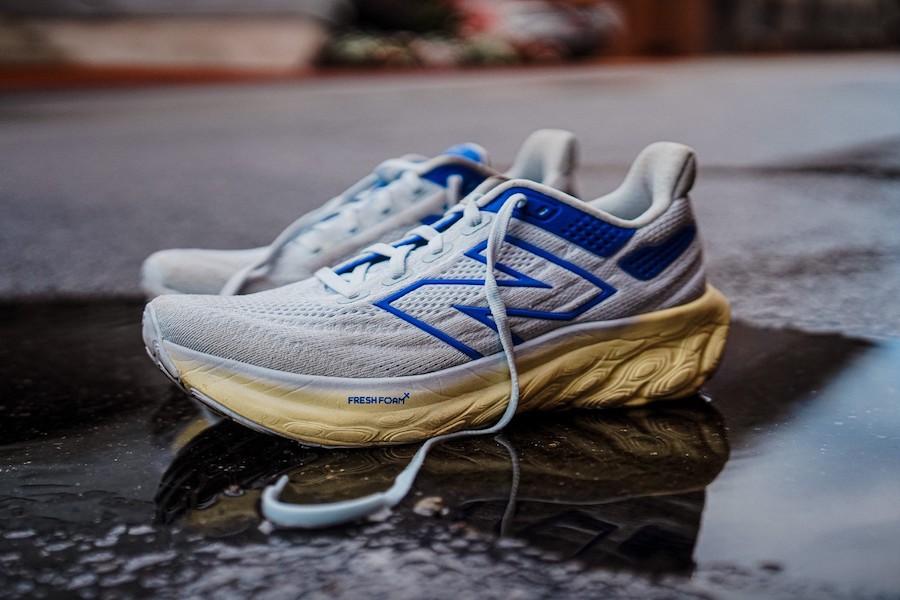
New Balance 1080v13, men’s release colorway
CHAD: Prior to joining Believe in the Run, my only New Balance running shoe experience was the 860v12, one of New Balance’s stability offerings. Since then, I’ve run in the More v4, the RC Elite v2, the SC Trainer v2, and the Vongo v6 (which I have in the testing rotation). Each shoe has been an absolute hit for me in its individual category, and my experiences have turned me into a certified New Balance fan.
So when I found out that I’d be testing the 1080v13, three words came to mind: Oh hell yeah! Having run in the max-cush Fresh Foam shoe in the More v4 and the Fresh Foam stability shoe in the 860, I was excited to try out the shoe that New Balance considers to be one of its most versatile daily trainers. The 1080v13 features a mid-to-high stack height in a reasonably weighted package, at 9.24 oz. for a US M9 (7.27 oz. for a US W7).
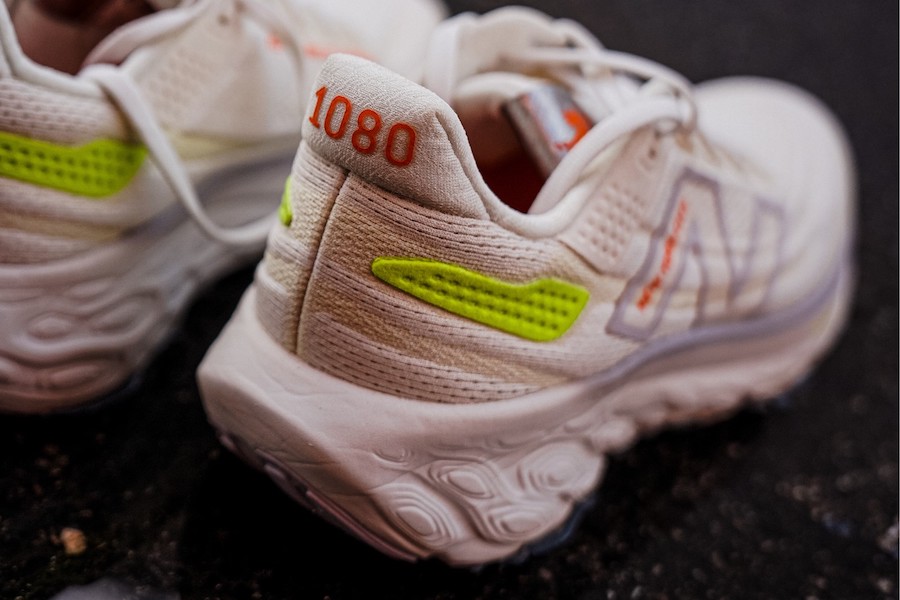
Padded heel tab
CARYN: In a previous review, I quaintly described how for the better part of a decade, I wore exactly one style of running shoe. After joining a training group and taking a job in specialty run, my eyes were opened (quite literally, in the stock room) to the plethora of options that were not my beloved Gel-Kayano. This was the precipice of the max cushion, carbon-plated revolution– think Chicago Marathon starting line 2018, neon Vaporfly 4% erry’where. Seeing as I opted to run that marathon in a pair of Brooks Adrenaline because they were lighter than my Kayano (again, I’ll let you mull that one over for a minute), I clearly wasn’t sold.
With the dawn of the 4%, stack heights crept up slowly, and then explosively. It wasn’t until a shipment of the 1080v10 arrived at our store that I felt drawn to the cush. The 1080v10 had this fabulous combination of New Balance’s Fresh Foam X, which was soft yet somehow still a touch responsive, and a supportive knit upper that hugged your foot in the best way.
The 1080v10 was my gateway into the max cushion universe, and remains in my top five favorite daily trainers of all time (yeah, I said it). I went so much as to continue buying it on eBay for years, because future iterations just didn’t come close to replicating the magic of version 10. Versions 11 and 12 both lacked structure to me, with the sizing way off and the upper sagging in various places. When Version 13 showed up on my doorstep earlier this summer, I couldn’t help but hope it would be a true return to the 1080 glory days.
WHAT WE LIKE ABOUT THE NEW BALANCE 1080V13
MEAGHAN: If you ran in the previous model of this shoe, you know the knit upper left a lot to be desired. On step-in, it was clear this was no longer the case. The completely new mesh upper is structured and highly padded around the tongue and collar for a comfortable, locked down fit. It’s stretchy, but not so much that your foot slides around, as it did in the previous version.
Beneath the foot also feels like a huge upgrade. The new formulation of Fresh Foam X is soft yet bouncy and responsive. It felt good on step-in and even better out on the roads. With 35 mm of stack underfoot this shoe doesn’t make it into the max cush category, but it felt like plenty of shoe. My W7.5 came in at 8 oz/240g which falls right into the middle range for daily trainers.
THOMAS: The 1080 is the one shoe in the New Balance lineup that is designed to work well for the widest variety of runners. The shoe delivers a premium neutral daily trainer fit and feel. The Fresh Foam X is so plush I wonder why you would need the New Balance max cush More v4. If you like the good sweet cush, this is a daily trainer for you. The 1080 v13 smoothes out the road but still gives you a little zing. This is not one of those cushioned shoes that sacrifices pop for squish. I’m not saying the 1080v13 is super responsive, but it is not a foot pillow.
My size 10.5 weighs a middle of the road 10.2 oz/289g. The upper is a massive improvement over the previous model. The standard D width fits my narrow foot almost perfectly and runs true to size. There is zero puckering at the bottom of the U-throat. I had no hot spots, rubbing, or heel lift.
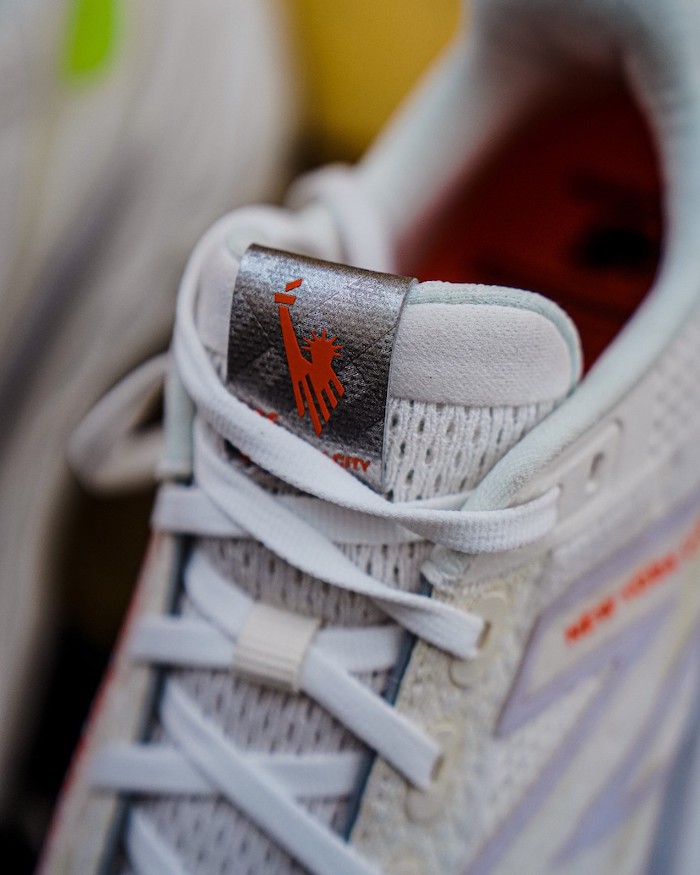
New York City Marathon details on tongue
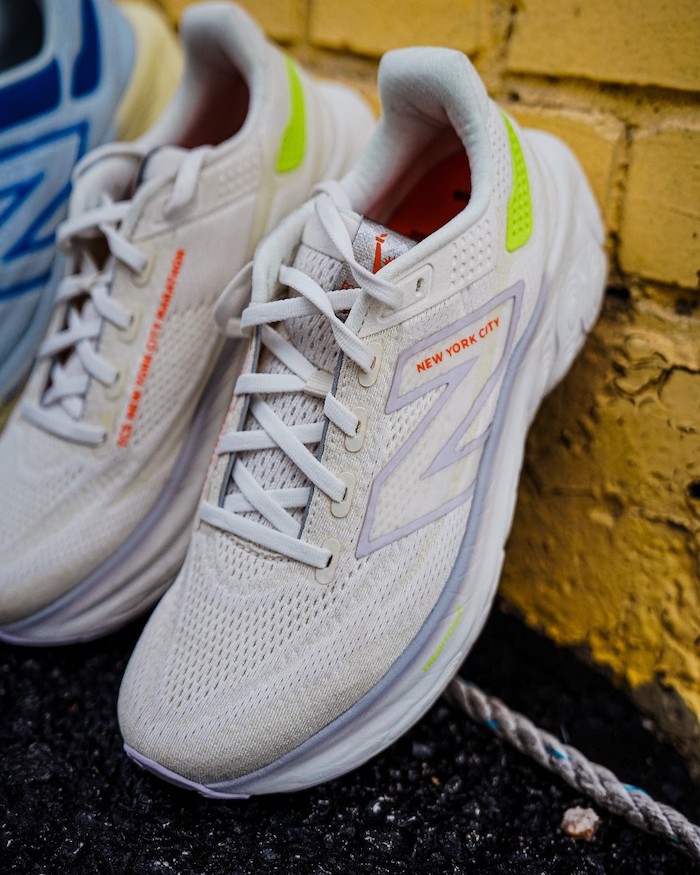
CHAD: I usually always say that comfort is key when it comes to running shoes, and New Balance always seems to listen to me. The step-in feel and comfort of the 1080v13 is top notch, both in the upper and underfoot. The upper provides a solid lockdown while also having adequate room for high volume feet. Underfoot while walking around, the cushioning and bounce of the Fresh Foam X midsole is noticeable and much appreciated. I could see this being a shoe I would wear casually or on a day trip that would require lots of walking, especially since it also has a real clean-cut aesthetic that I like.
If you think I enjoyed the comfort of the shoe while walking around, it got even better once I started running in the 1080v13. I don’t know how they did it, but this iteration of Fresh Foam X has the perfect blend of softness and bounce that lasted throughout each of my runs, with no bottoming-out or going dead.
This might be blasphemy, but the bouncy responsiveness of the 1080v13 reminds me of the Asics Novablast 3, one of my favorite shoes of 2022. Add in the softness of the cushioning that protects the joints and you get an incredibly smooth ride.
I also appreciate that New Balance dropped the– *looks around*– drop on the 1080v13 to 6 mm. I think with the geometry of the shoe and the toe spring, the lower drop helps to transition me through each stride, and takes pressure off the knees and hips.
CARYN: Things started off well when I opened the box to a soothing, white and lilac colorway. My affinity for white shoes has no limits (seriously, my closet is embarrassing), and this shoe fits right in. While the overall aesthetic has evolved from recent 1080 territory (anyone remember the elf heel?), it’s nice looking– less funky and more approachable.
The step-in feel was lovely – New Balance does a fantastic job with their toe boxes so I knew I’d have a ton of room. The upper is a more standard, no-nonsense lightweight mesh that breathes well and allows for good lockdown on the run. The new formulation of Fresh Foam X has a little more rebound to it, which I love.
I’ve admittedly found myself wearing this shoe outside of running as well; it seems to hold up to 14 hours of ICU nursing just as well as a 10-mile east run. Overall, this shoe feels nearly identical to another one of my favorites, the Hoka Clifton 9, with just a touch more pop and some extra space in the toe box. Let’s be real, who doesn’t want more pop?
WHAT WE DON’T LIKE ABOUT THE NEW BALANCE 1080V13
MEAGHAN: Really digging for this one, but it’d be cool if this shoe was a little lighter. There’s something (100% all mental) about seeing a 7.xx oz vs 8 oz that just feels right. That’s all I got.
THOMAS: My complaint is personal regarding the organic cellular tooling on the midsole. The soft ellipses are the last design elements tying the v13 to the v12. This shoe is good enough to have launched an entirely new look for the 1080 line. A line in the sand if you please.
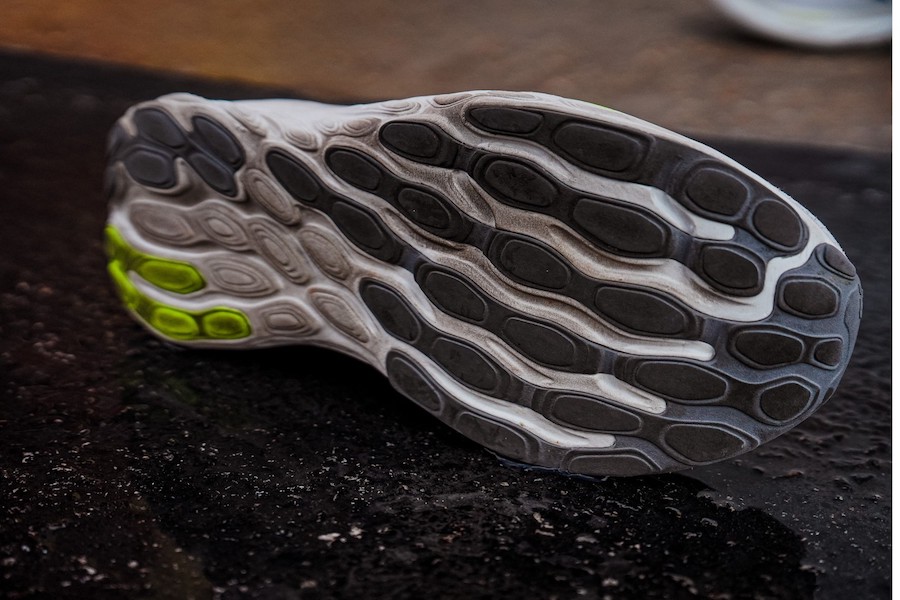
Similar outsole to the last version
CHAD: There’s only one thing I can list in the negatives about this shoe, and that is its stability. I tend to prefer shoes that are stable-neutral or stability shoes, and the 1080v13 is neither of those. This is a very neutral shoe. It wasn’t unstable to the point of causing me issues or pain in my Achilles or post-tib tendon, but it is something worth noting if you prefer some stability in your daily trainers.
CARYN: I have very little to say here, but if I’m going to be nit-picky, I didn’t love the upper as much as I wanted to. It was certainly a change from previous versions of the shoe– more traditional, less knit– and I missed that component more than I thought I would. The tongue felt stiff and a bit bulky, but like I said, we’re talking pretty minor details at this point.
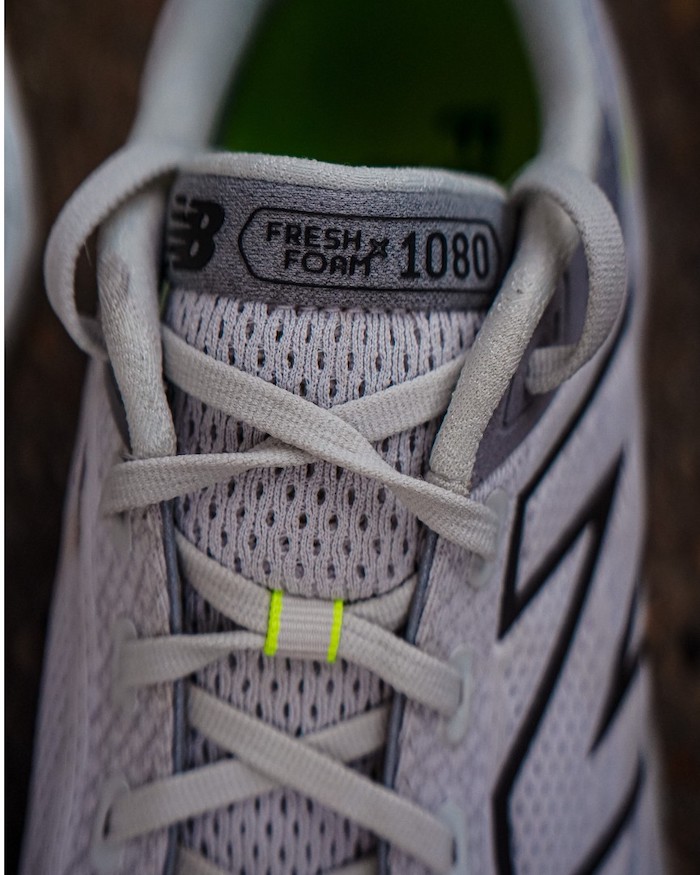
Tongue details on the standard men’s version
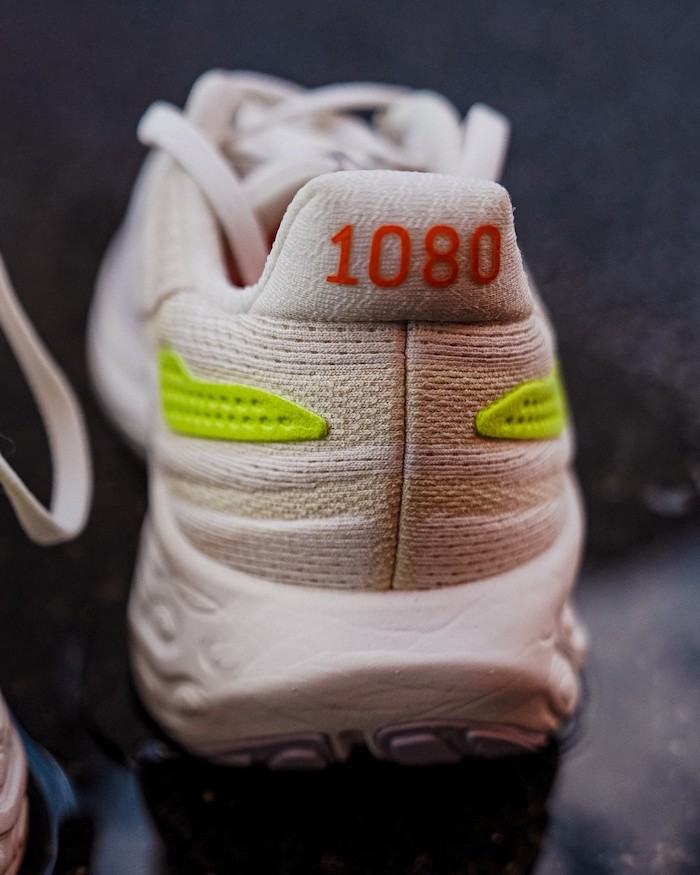
NEW BALANCE 1080V13 CONCLUSION
MEAGHAN: After a few years of riding the coaster, the New Balance 1080v13 feels back on track. It’s comfortable, responsive, and works for all kinds of running, from recovery days to long runs. I would put the 1080v13 in the same category as the Asics Gel-Nimbus 25 or Hoka Clifton 9 (two of my favs), but with a little more pep… and we all love a little more pep.
THOMAS: The closest competitor to the 1080v13 would be the Asics Gel-Nimbus 25. Our entire team loves the Nimbus 25 and the New Balance 1080v13 has just a touch more responsive feel packed into the Fresh Foam X. Other shoes I would compare are the Puma Magnify Nitro 2, Brooks Ghost Max, Nike InfinityRN 4, and Skechers Max Road 6.
The feature all these shoes share is the max cushioning. However, they all differ in softness and weight. Between the options you can find the right shoe to give you miles of comfort. Check out our reviews on the other shoes to suss out the details.
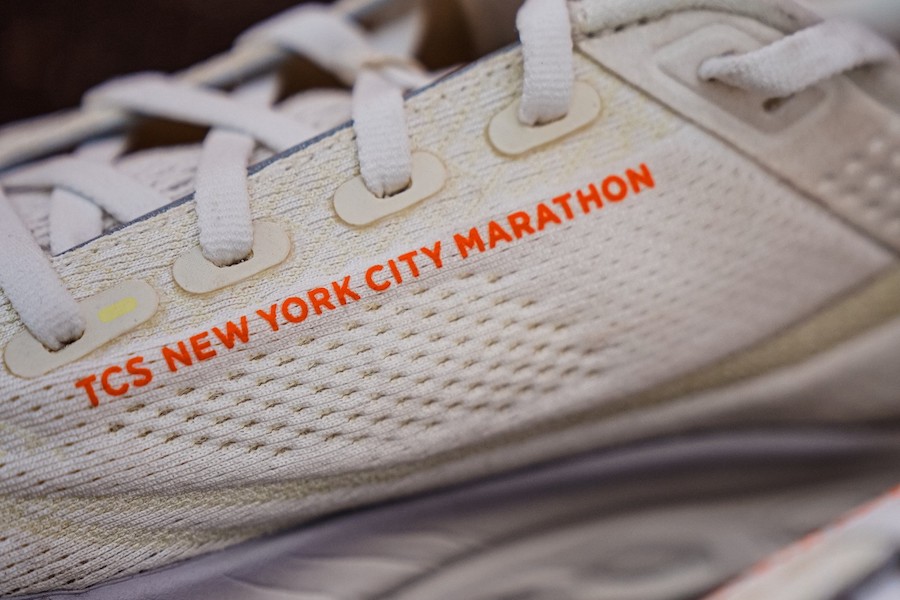
Medial side of the New York City Marathon edition
CHAD: The New Balance 1080v13 is a great daily trainer for someone looking for something with a little bit of cushioning and bounce and a neutral ride. I thoroughly enjoyed the responsiveness from this shoe during my runs in it. While I personally won’t be taking it out much because of my preference for a little stability, there’s definitely a reason that the 1080 series is considered one of the most premium trainers on the market.
CARYN: Guess who’s back (back again)? The 1080– and you should definitely tell a friend (hopefully someone will still be friends with me after that one). In all seriousness, thank you New Balance for bringing this favorite of mine back around for the better.
I’m so glad that this iteration of the 1080 was the glow-up we were waiting for, because it’s one of my top picks this year for a true daily trainer. Thanks to the combination of a new upper and a peppier Fresh Foam X, the 1080v13 is the Real Slim Shady, and you can find me happily putting many more miles on mine throughout the fall.
You can pick up the New Balance 1080v13 for $165 directly from New Balance
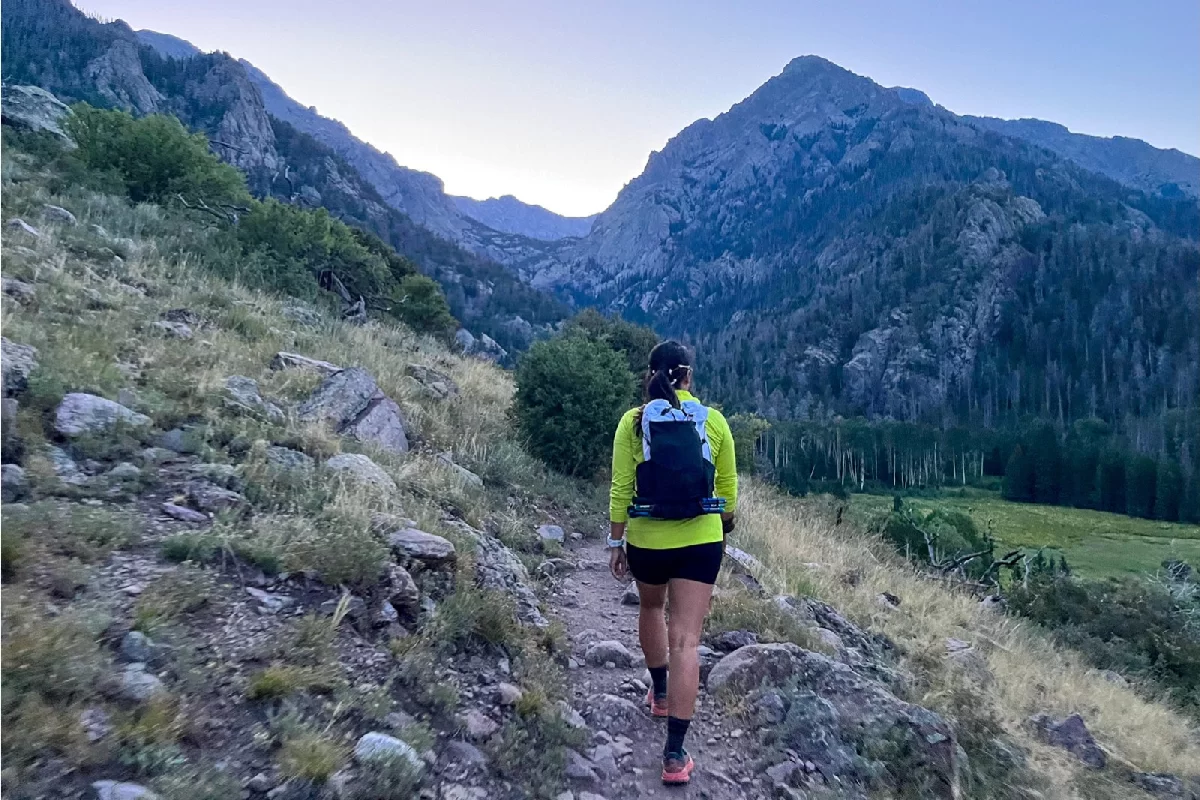
Outdoor Vitals Skyline 30 Fastpack Review: What Are We Packin?
INTRO TO THE OUTDOOR VITALS SKYLINE 30 FASTPACK ALEX: The Outdoor Vitals Skyline 30 Fastpack is a thoughtfully designed, versatile pack that combines durability, functionality, and comfort, making it an excellent choice for adventures ranging from day hikes to multi-day fastpack adventures through the backcountry. With […]
NutritionINTRO TO THE OUTDOOR VITALS SKYLINE 30 FASTPACK
ALEX: The Outdoor Vitals Skyline 30 Fastpack is a thoughtfully designed, versatile pack that combines durability, functionality, and comfort, making it an excellent choice for adventures ranging from day hikes to multi-day fastpack adventures through the backcountry. With a 30-liter capacity, it strikes a perfect balance between providing ample storage space and remaining lightweight.
The company behind it, Outdoor Vitals, is known for its commitment to producing high-quality outdoor gear that stands up to the demands of the wilderness. With a mission to help people connect more deeply to the outdoors, they are committed to a patient process that involves in-depth research and thorough testing of the gear they develop. If you haven’t yet, check them out.
I took the Skyline 30 out on long days in the Crestone Mountains in Colorado. I love the feeling of having everything I need for a long day in the mountains in my pack. Correction: I don’t love being aware that I have everything in my pack — I like to pack it all in and forget about it. The Skyline 30’s vest-like fit kept my gear close to my body and allowed me to do just that.
TAYLOR: I’m far from a hipster, but I appreciate uniqueness. Anything small-batch or craft is right up my alley. It’s even better when practicality and function are the most forward design principles. For all of these very reasons, the little-known Outdoor Vitals is one that pulls me in every single time.
Everything the team creates is top-shelf quality. Off the top of my head, highlights include the lightweight ball of warmth Ventus hoodie, the adaptable Tern Ultralight Merino Tee, the wind-slaying Vario jacket, and the Tushar Rain Jacket with pit zips… it’s seriously good stuff. Now that I think of it, I have more Outdoor Vitals gear at the ready than any other brand right now.
Outdoor Vitals was born from a classic storyline. It’s the “I’m not satisfied with any of the gear I have, so I’m going to create my own stuff and sell it because this is what people actually need” type of story. When the company started, it was all about the backpacking scene, and still mostly is. And that’s the reason why most runners out there still don’t know the brand at all.
Fast forward a few years, and the owner of the company stumbled onto the trail running scene and got hooked. Outdoor Vitals’ ultralight mentality is a natural crossover to the trail running scene. It shouldn’t be a surprise that we’re now seeing some very run-specific gear trickling out onto their website.
Using their massive depth of outdoor gear knowledge and newfound stoke for running, the Skyline 30 Fastpack was born. It’s a prime example of what Outdoor Vitals is ready to do in the space. Let’s get to some specifics.
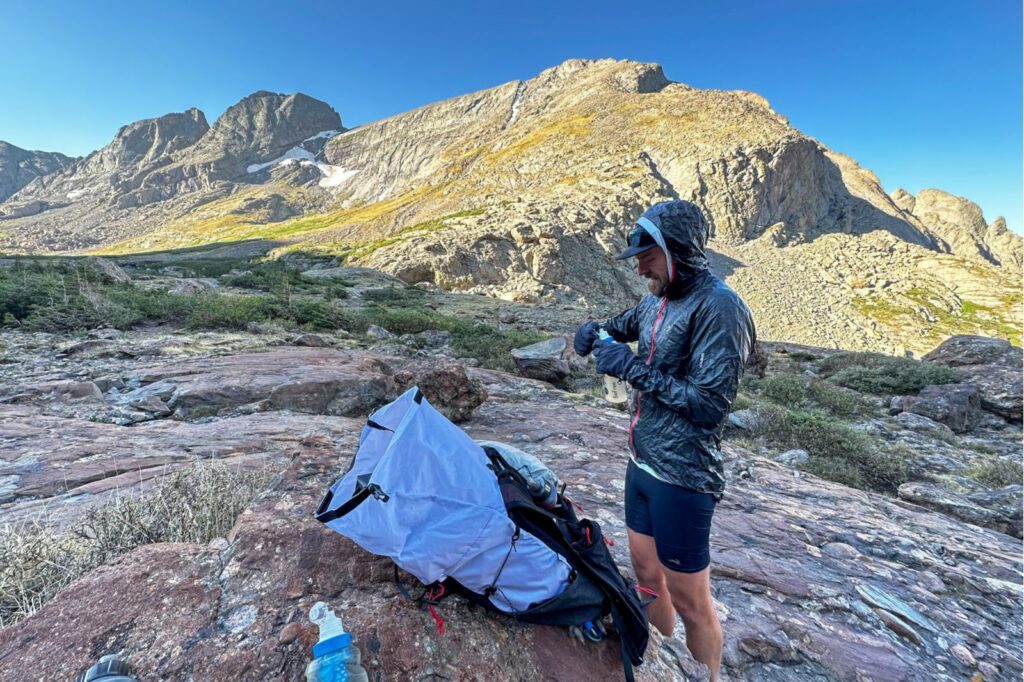
WHAT WE LIKE ABOUT THE OUTDOOR VITALS SKYLINE 30 FASTPACK
ALEX: The purpose and design of the Outdoor Vitals Skyline 30 are tailored to meet the needs of those looking to spend long days or multiple days out on the trail. Its 30-liter capacity strikes a perfect balance between ample storage space and weight.
The black-and-white design and aesthetic of the pack are so good. It’s clean and simple. I love white packs and white shoes. Well, I love them until I wear them in the mud once, and there’s no evidence that the shoe started out a beautiful clean white color. Sometimes I wonder why companies even bother — kinda like white underwear. Why? I digress. The pack looks really good. Even better, the 100D Robic nylon diamond ripstop is super durable and water resistant with a WP rating of 15000 mm HH.
The pack immediately scored points when I saw that it had exterior pockets… well-designed ones, at that. Ever since I owned my first Ultimate Direction Fastpack and experienced the beauty of well-functioning external stretch pockets, I cannot use a pack without them. Wet clothes? Wet tent? Stuff it in the stretch pocket. Stinky socks? White underwear because you were feeling bold on day one? Stretch pocket. Snacks, water filter, headlamp, gloves, and any other items you want quick access to on the move? Stretch pocket.
I’ve nearly doubled the carrying capacity of packs by really stretching that stretch pocket. It’s a wonderful design that, once experienced, will change your life. The great thing about this stretch pocket, in particular, is that it’s made of a durable Challenge Ultra stretch mesh material that won’t get snagged on branches or scraped up when you’re squeezing between rocks or falling on your ass and riding scree down a steep slope.
Seamlessly built into the design of those wonderful external stretch pockets is a pass-through bottom pocket that works perfectly for stowing trekking poles. The side stretch pockets both accommodate 1L bottles and are also perfect for your water filter, extra food, gloves, or headlamp. There’s even a zippered compartment in the mesh to keep your phone and wallet secure.
The second feature I look for in a pack is well-designed front pockets, and the front of the Skyline 30 is awesome. There are bottle pockets that fit two 500ml soft flasks, and each strap has three smaller stretch pockets. This is hard to explain, so look at the photos. The first is for soft flasks and is secured/adjustable via a retention loop and shock cord tension closure. The middle is secured with a zipper and includes a lanyard clip. The lower pocket is perfect for items that you need quick access to and is also secured/adjustable with a retention loop and shock cord tension closure.
The shoulder harness has dual adjustable sternum straps that you can move vertically and adjust for tension. It’s made of perforated foam that allows the pack to breathe effectively and is protected by a ripstop mesh. The back is equipped with EVA foam with large cutouts that effectively vent the back of the pack and allow airflow between you and your gear. All add to the weight savings, and all have a well-thought-out purpose.
The main compartment of the pack has a simple stuff sack design with a roll-top V-compression webbing closure. This design is secure and also allows you to stow your sleeping pad on the outside of your pack. There are two small zippered pockets (this is where I store spare batteries and a charger) as well as a hydration bladder sleeve inside. The 23L main compartment is where I stored my climbing helmet, puffy jacket, rain gear, an extra base layer, socks, food, and first aid.
As with most packs, it performs best when fully loaded. While the bounce and movement were minimal when packed to half capacity, it was notably better when I had a full load. The side adjustments are super simple thin paracord which I didn’t appreciate at first but then grew on me. The design keeps the pack lightweight, and I appreciate that it’s less fancy stuff that could fail or cause issues in the backcountry.
Finally, the pack is equipped with three trekking pole/ice ax tension loops that allow tools to be carried in a variety of different ways.
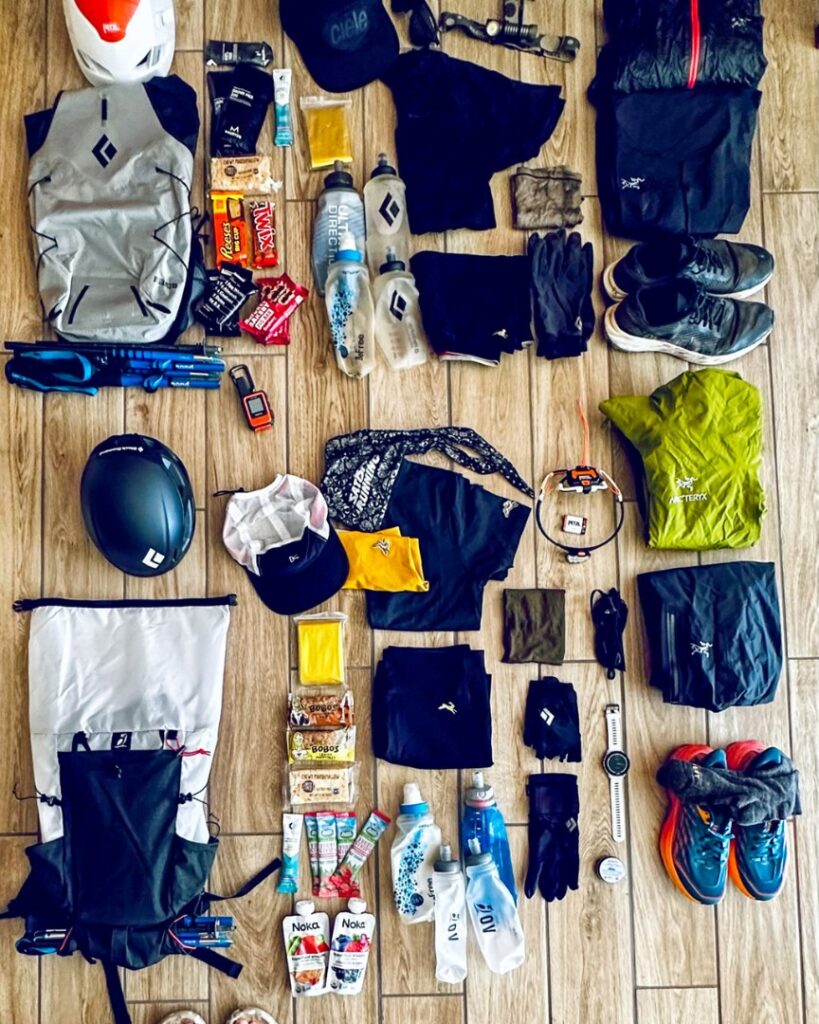
All of this… (well, the bottom half)
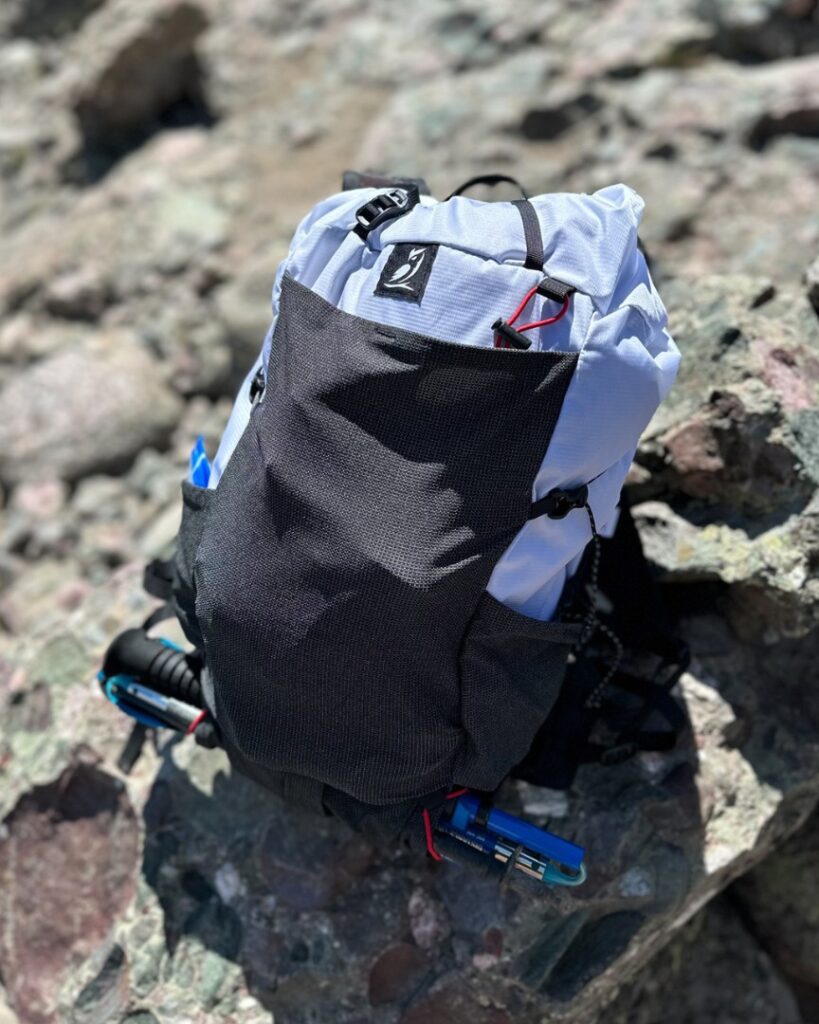
TAYLOR: Let me forewarn that much of what I’m about to say is an echo from Alex. She was able to get more miles and big adventures than I did, but we still had basically the same experience.
The most glaring positive, to me, was the overall fit. The harness of the Skyline 30 Fastpack is just like many other modern trail running vests. It has a lightweight front strap construction with some external pockets for the essentials like water bottles and a few other small items immediately underneath. The mesh and light layer of shoulder padding are very breathable and just rigid enough to hold the shape when the pack is full. The harness straps clip together with a series of chest straps and another “high hip” strap that comes across the stomach. I didn’t originally like this placement, but it actually grew on me and was a necessary piece to the puzzle. An
Even with full bottles, a phone, and keys up front and a full pack in the back, there was zero bounce to speak of. Everything was anchored appropriately without feeling restrictive. This carries a myriad of goods better than either of the Ultimate Direction Fastpack models that we reviewed. I was very surprised at its functional carrying capacity.
Most backpacking packs or fastpacks will ride closer to the waistline, but the Skyline 30 Fastpack rested a little higher on the mid back to keep things really close to the body. Again, this is similar to many trail running vests on the market right now. Personally, I liked how the ride felt, and the EVA foam backing provided more comfort as weight increased.
As Alex thoroughly laid out, pockets are a big deal with the Outdoor Vitals Skyline 30 Fastpack. They’re everywhere. Inside, outside, this side, that side, up front, and in back. All are thoughtful and have some real backpacker influence.
There are large external mesh pockets that make it too easy to stash jackets and other crap that needs easy access. We’ve already discussed the utility of the harness pockets. Then, there’s a large 23L main pocket and internal water reservoir sleeve with a roll-top closure that can cinch tightly or expand as needed.
Durability throughout the pack will be a non-issue too. The body of the pack is made out of a very light water-resistant ripstop-like material. I didn’t think twice about slipping through some rocks, setting my pack down near a stream, or bushwacking. There’s no doubt that the Skyline 30 Fastpack will last for many adventures to come.
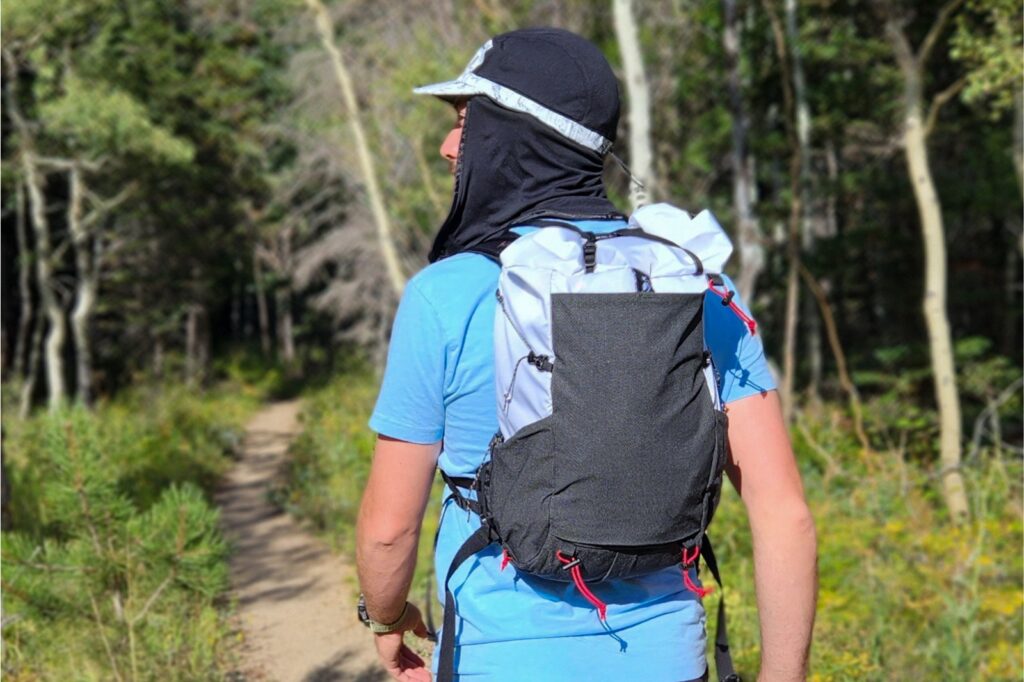
WHAT WE DON’T LIKE ABOUT THE OUTDOOR VITALS SKYLINE 30 FASTPACK
ALEX: I didn’t take this one out for any multi-day outings because doing so might require an adventure partner carrying a larger pack. Which, for the record, is always my preference. “Huh, this doesn’t fit in my pack, but I need it. Can I just put it in yours?” An alternative to this approach, if you can’t find a willing participant, is to ensure all of your gear is ultralight — which requires work or, let’s be real, money.
TAYLOR: Even though the Skyline 30 Fastpack is large for a running pack, it will be a stretch to fit everything you need for a night out or multiple days on the trail. 30 liters sounds like a lot until you try to fit your gear in it.
It can be a solid option if you have the right gear otherwise. I’m talking about bivy sack-type camping here. Everything from the sleeping bag to food systems and layers has to be able to pack down to micro. It would help a lot if your route also has a steady supply of water for filling the Hydroflask bottles that come with the pack.
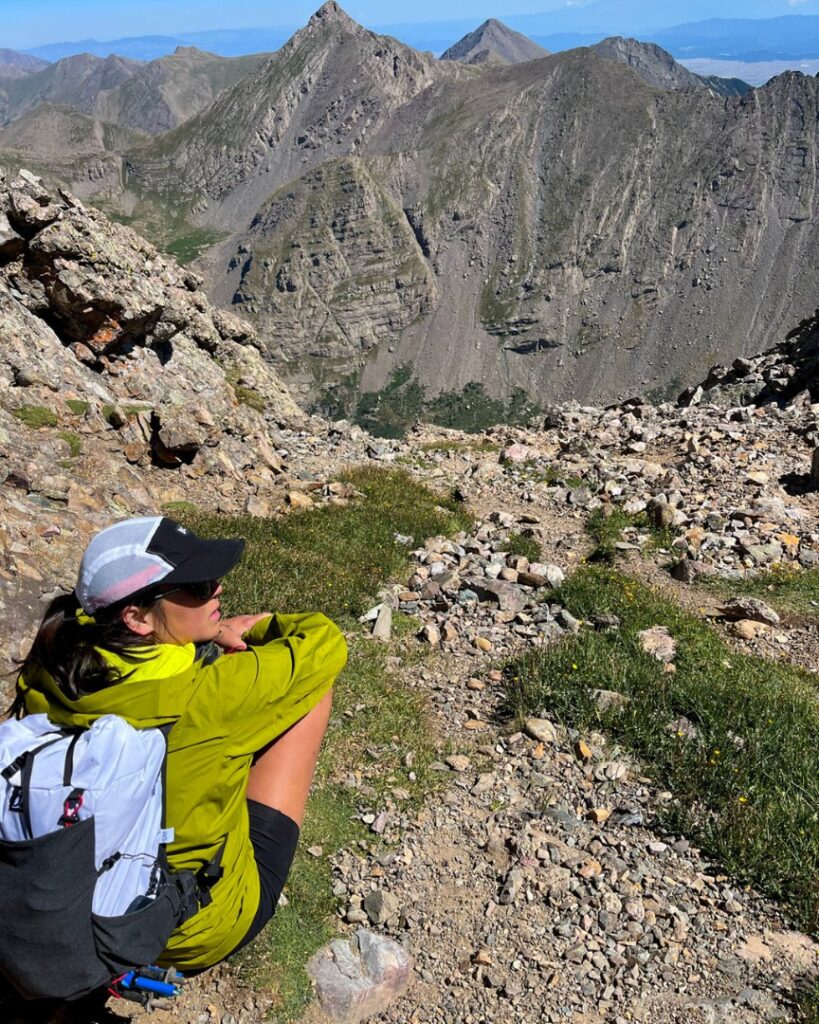
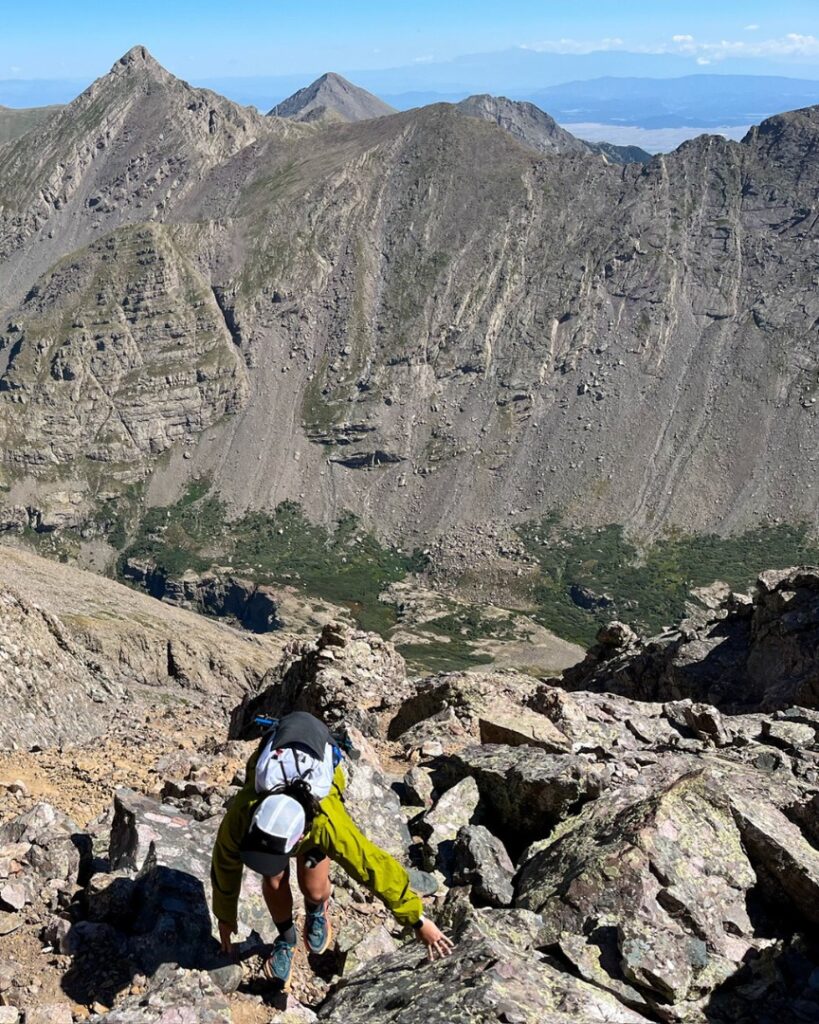
OUTDOOR VITALS SKYLINE 30 FASTPACK CONCLUSION
ALEX: I love the Outdoor Vitals Skyline 30 Fastpack and find myself reaching for it even for short hikes when I want to have some extra gear. It’s fun to wear and use, and it looks good.
The Skyline 30’s design is well-thought-out, with multiple pockets and compartments that allow for efficient organization of gear. The main compartment is spacious enough to accommodate essentials such as a hydration bladder, extra layers, and snacks. Additionally, the pack features amazing exterior mesh pockets and attachment points for securing trekking poles or ice axes, ensuring quick access to essential items while on the move.
The durable construction and water-resistant materials effectively protect gear from the elements, ensuring that important items stay dry even in inclement weather. The thoughtful design allows for easy access to essentials, saving precious time during summit pushes and surprise storms up high.
The Outdoor Vitals 30L Fastpack is reliable and well-designed. Its durability, ample storage capacity, and comfortable fit make it an ideal choice for tackling challenging terrains like multiple 14ers, long days out in the mountains, or even short to mid-distance day hikes. Whether you’re a seasoned hiker, an FKT hopeful, or looking for a pack for your urban run commute, this pack will enhance your experience by efficiently carrying your gear and providing the functionality you need in any setting.
You cannot go wrong with this one or anything else from Outdoor Vitals.
TAYLOR: I’ve learned to expect big things when Outdoor Vitals steps up to the plate. In the case of the Skyline 30 Fastpack, they hit a first at-bat homer. Function and practicality are met with style to create a sleek pack that’s ready for just about any adventure.
If you have the right ultralight gear and conditions, this pack could be a great multi-day fastpacking companion. As the mule, I was happy to carry the Skyline 30 when it was bursting at the brim or had just a few things.
There’s no reason that this couldn’t be used for a day pack or long race pack, either. It has all the necessary ingredients for sensibly hauling any amount of gear at a quick clip while being much lighter than its competitors.
You can pick up the Outdoor Vitals Skyline 30 Fastpack for $198 from Outdoor Vitals using the buttons below.
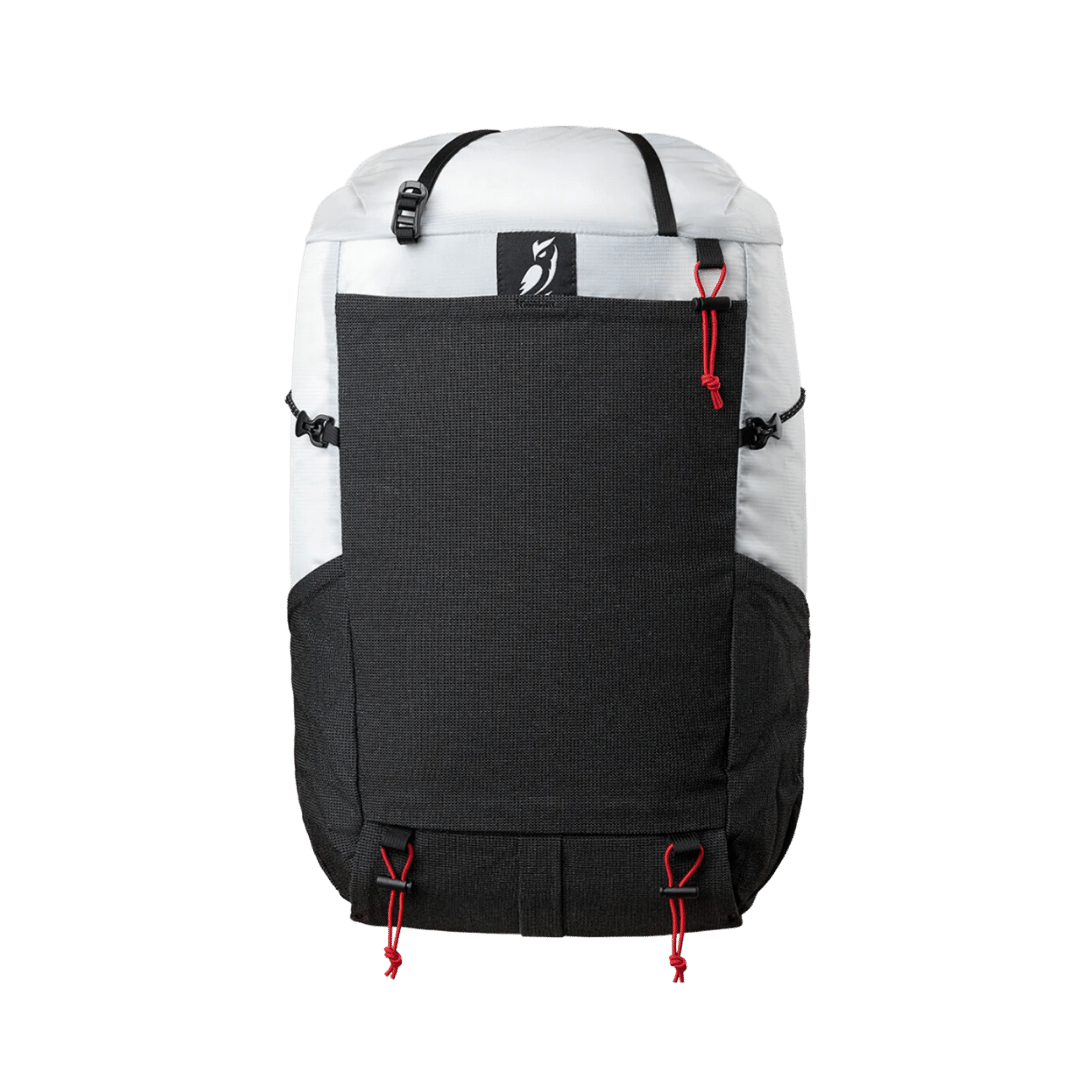
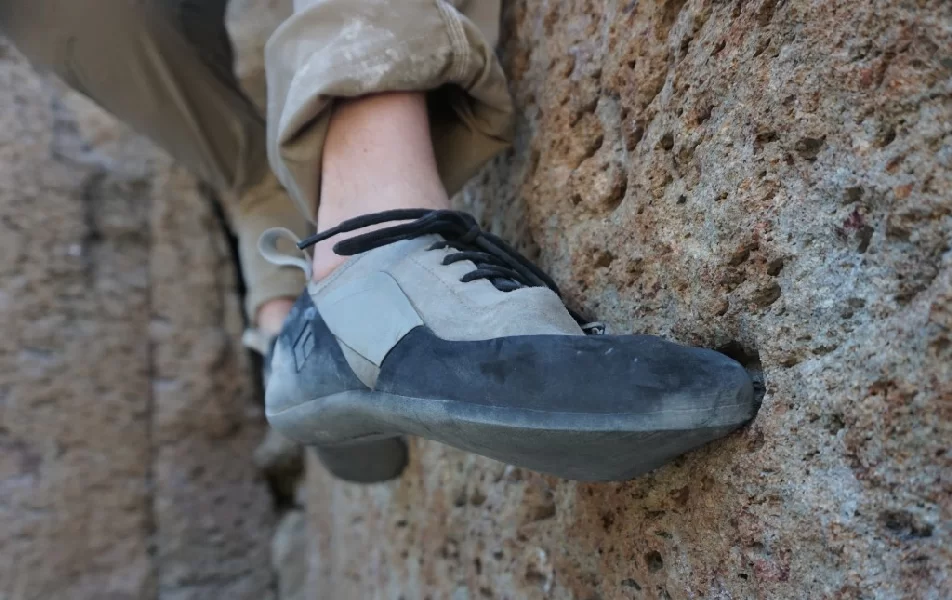
The 7 Best Climbing Shoes of 2024: Reach New Heights with Confidence and Precision
Introduction:Climbing shoes are an essential piece of equipment for rock climbers, providing the necessary grip, sensitivity, and support needed to conquer the vertical world. As climbing technology continues to evolve, the year 2024 brings forth a new generation of climbing shoes designed to enhance performance […]
Home & Garden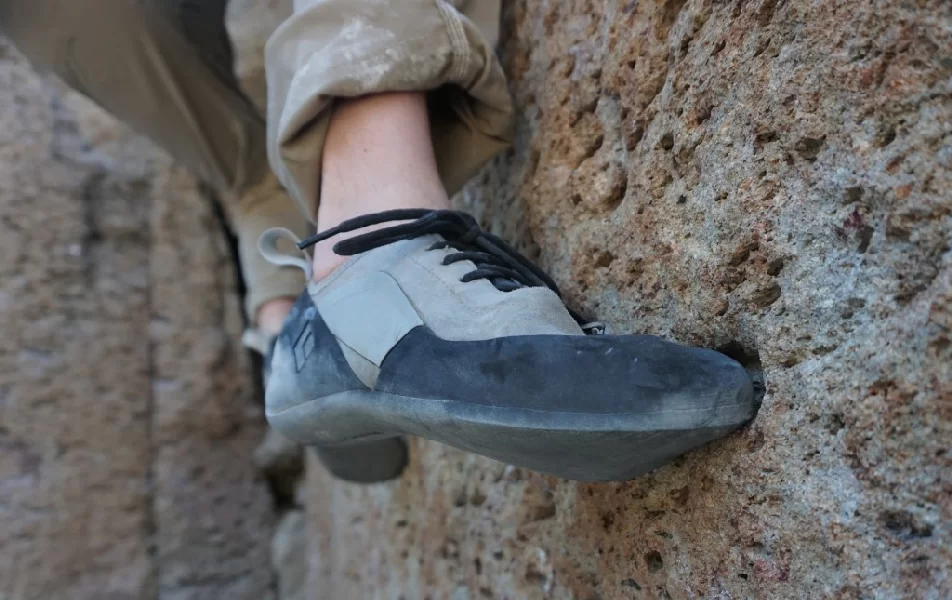
Introduction:
Climbing shoes are an essential piece of equipment for rock climbers, providing the necessary grip, sensitivity, and support needed to conquer the vertical world. As climbing technology continues to evolve, the year 2024 brings forth a new generation of climbing shoes designed to enhance performance and comfort. In this blog post, we’ll explore the seven best climbing shoes of 2024, offering climbers unparalleled confidence and precision as they reach new heights.
- La Sportiva Solution:
The La Sportiva Solution climbing shoes are renowned for their aggressive downturned shape and superior performance. These shoes feature a precision fit and a sensitive sole, allowing climbers to feel the rock and maintain excellent grip. The Solution shoes also incorporate La Sportiva’s P3 (Permanent Power Platform) technology, which keeps the shoe’s shape over time, ensuring consistent performance. With their toe-hooking capabilities and sticky rubber outsole, these shoes excel in overhanging routes and boulder problems. - Scarpa Vapor V:
The Scarpa Vapor V climbing shoes strike an impressive balance between comfort and performance. These shoes feature a moderate downturned shape and a Vibram XS Edge rubber outsole, providing excellent edging capabilities. The Vapor V shoes also boast a dual-strap closure system for a precise and secure fit. With their durable construction, all-day comfort, and versatility, these shoes are ideal for both indoor and outdoor climbing on a variety of terrains. - Five Ten Anasazi Pro:
The Five Ten Anasazi Pro climbing shoes are a favorite among climbers seeking exceptional edging and smearing abilities. These shoes feature a Stealth C4 rubber outsole, known for its outstanding friction on rock surfaces. The Anasazi Pro shoes also offer a medium-stiff midsole and a narrow, asymmetric shape for maximum precision. With their durable construction, secure hook-and-loop closure, and all-around performance, these shoes are a reliable choice for technical climbs and steep routes. - Evolv Oracle:
The Evolv Oracle climbing shoes are designed for climbers in search of high-performance footwear. These shoes feature a downturned shape and a sensitive midsole for precise foot placements. The Oracle shoes utilize Trax SAS rubber, providing excellent grip on various types of rock. With their hook-and-loop closure system, breathable tongue, and aggressive design, these shoes excel in steep and demanding climbs, offering climbers the confidence to push their limits. - Black Diamond Momentum:
The Black Diamond Momentum climbing shoes are perfect for climbers who prioritize comfort and versatility without sacrificing performance. These shoes feature a neutral shape and a durable rubber outsole for reliable friction. The Momentum shoes also incorporate Black Diamond’s Engineered Knit Technology, offering breathability and a snug fit. With their easy-to-use Velcro straps, padded tongue, and comfortable design, these shoes are suitable for climbers of all levels and for both indoor and outdoor climbing. - Tenaya Mastia:
The Tenaya Mastia climbing shoes combine precision and comfort, making them a popular choice among climbers. These shoes feature a moderate downturned shape and a Vibram XS Grip rubber outsole, providing excellent performance on small edges and smears. The Mastia shoes also offer a microfiber upper that molds to the foot, ensuring a precise and personalized fit. With their hook-and-loop closure system, padded heel cup, and versatile performance, these shoes are suitable for a wide range of climbing styles and difficulty levels. - La Sportiva Otaki:
The La Sportiva Otaki climbing shoes are engineered for climbers who desire both power and sensitivity. These shoes feature a moderate downturned shape and a Vibram XS Edge rubber outsole, offering exceptional edging capabilities. The Otaki shoes also boast a S-Heel construction for optimal heel hooking performance. With their precise fit, adjustable hook-and-loop closure, and durable construction, these shoes excel in technical climbing and vertical routes.
Conclusion:
Choosing the right climbing shoes can greatly impact your climbing experience and performance. The seven best climbing shoes of 2024, including the La Sportiva Solution, Scarpa Vapor V, Five Ten Anasazi Pro, Evolv Oracle, Black Diamond Momentum, Tenaya Mastia, and La Sportiva Otaki, offer climbers a range of options to suit their preferences and climbing styles. Whether you prioritize aggressive performance, all-day comfort, or versatile functionality, these shoes provide the confidence and precision needed to reach new heights. Invest in a pair of these top-notch climbing shoes and elevate your climbing adventures to new levels of success. Happy climbing!

Festive Feasts: Crafting Unforgettable Menus
The holiday season is a time of togetherness, joy, and of course, indulgent feasts. Crafting unforgettable menus for your festive gatherings is an art, and it can leave a lasting impression on your guests. This article will guide you through the process of creating menus […]
Home & GardenThe holiday season is a time of togetherness, joy, and of course, indulgent feasts. Crafting unforgettable menus for your festive gatherings is an art, and it can leave a lasting impression on your guests. This article will guide you through the process of creating menus that captivate the senses, delight the palate, and make your celebrations truly memorable.

Understanding Your Audience
Before you dive into menu planning, it’s essential to understand your audience. Consider their tastes, preferences, and any dietary restrictions. Tailoring your menu to your guests ensures that everyone enjoys the meal.
Tailoring Menus to Your Guests
Whether you’re hosting a family dinner or a large holiday party, knowing your guests’ preferences is crucial. Are they adventurous foodies, or do they prefer traditional dishes?
Dietary Restrictions and Preferences
Don’t forget to consider dietary restrictions such as vegetarianism, allergies, or cultural preferences. Offering a variety of dishes can cater to different tastes.
Finding Inspiration
Inspiration for your festive feast menu can come from various sources. Exploring different cuisines and drawing from seasonal or thematic influences can breathe life into your culinary creations.
Exploring Different Cuisines
Incorporating elements from various cuisines can add an exciting twist to your menu. Think about introducing a Chinese, Italian, or Indian dish that complements your theme.
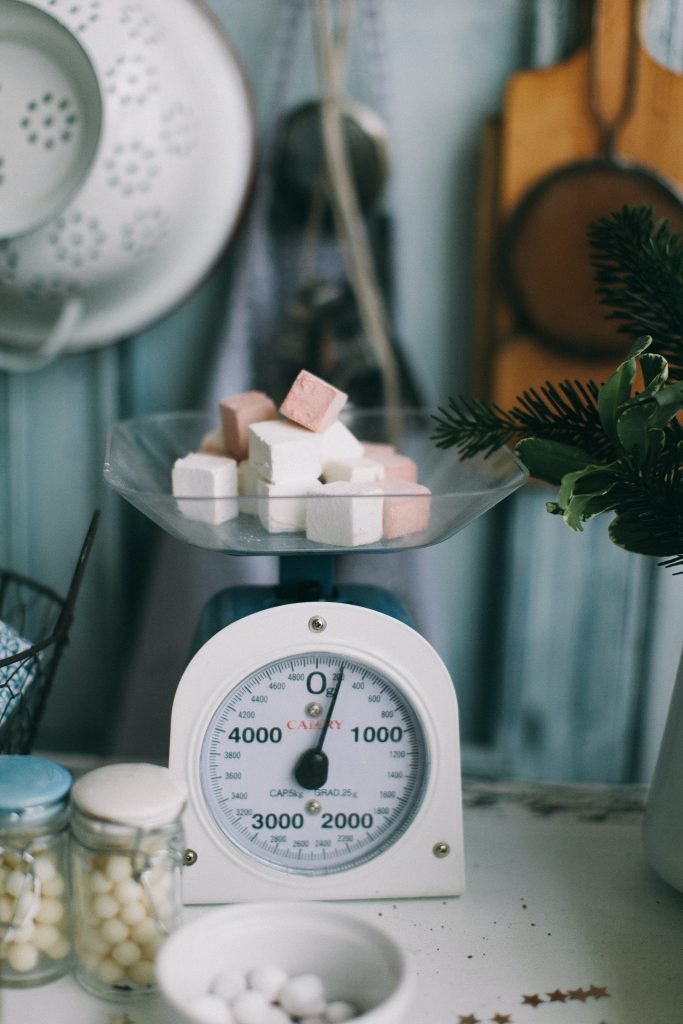
Seasonal and Thematic Influences
Seasonal produce and thematic influences can shape your menu. For instance, a winter-themed feast might feature roasted root vegetables and hearty stews.
Creating a Menu Structure
A well-structured menu is like a perfectly composed symphony. It needs balance, variety, and harmony in each course.
The Importance of Balance
Balance your menu with a mix of flavors, textures, and cooking techniques. A perfect balance ensures every course is a delight.
Courses and Pairing
Consider the flow of courses, from appetizers to desserts, and how they complement one another. Pairing wine or cocktails with specific courses can elevate the dining experience.
Ingredient Selection
The heart of a memorable feast lies in ingredient selection. Freshness, quality, and a nod to local and seasonal ingredients can make a world of difference.
Freshness and Quality
Opt for the freshest ingredients you can find. Quality is key in creating dishes that leave a lasting impression.
Local and Seasonal Ingredients
Using local and seasonal ingredients not only supports local farmers but also adds a unique, fresh dimension to your dishes.
Starter Courses
Starter courses set the tone for your festive feast. They should be captivating, flavorful, and leave your guests wanting more.
Appetizers That Wow
Impress your guests with a selection of appetizers that tantalize the taste buds. Think bruschettas, mini quiches, or exotic skewers.
Soup and Salad Selections
Offer a variety of soups and salads to cater to different tastes. Creamy butternut squash soup or a fresh spinach salad can be excellent choices.
Main Course Excellence
The main course is the centerpiece of your festive meal. It’s the dish that everyone looks forward to.
Signature Dishes
Consider including a signature dish that’s your culinary masterpiece. It could be a perfectly roasted turkey, a succulent prime rib, or a vegetarian Wellington.
Vegetarian and Non-Vegetarian Options
Cater to both vegetarians and meat-lovers. A well-thought-out vegetarian option, such as a stuffed acorn squash, can be just as memorable as the meat dishes.
Side Dishes and Accompaniments
Side dishes and accompaniments are often unsung heroes that elevate the meal experience.
Enhancing the Meal Experience
From garlic mashed potatoes to caramelized Brussels sprouts, these sides can be the star players.
Creative Sides
Get creative with side dishes, exploring unique combinations like bacon-wrapped asparagus or truffle-infused mac and cheese.
Delectable Desserts
A festive feast isn’t complete without a selection of delectable desserts. They’re the sweet endings that leave a lasting impression.
Sweet Endings
Desserts like homemade pumpkin pie or a rich chocolate mousse can wrap up the meal on a high note.
Themed Desserts
Consider desserts that match your theme. For a Christmas feast, gingerbread cookies or Yule log cake could be the perfect finale.
Beverage Selection
Pairing your festive menu with the right beverages can enhance the dining experience.
Pairing with Wines and Cocktails
Choose wines or cocktails that complement the flavors in your dishes. White wine with seafood, or a classic martini with appetizers, can be delightful choices.
Non-Alcoholic Options
Remember to offer non-alcoholic options for guests who don’t drink. Mocktails and fruit-infused waters are refreshing alternatives.
Presentation Matters
The presentation of your dishes is just as important as their taste. The way you plate and serve your meals, as well as the decor and ambiance, contribute to the overall experience.
Plating and Serving
Invest time in beautifully plating your dishes. Use garnishes and creative arrangements to make the meal visually appealing.
Decor and Ambiance
Set the mood with festive decor. Candles, table settings, and music can create a warm and inviting ambiance.
Managing Dietary Restrictions
In today’s diverse world, it’s essential to accommodate dietary restrictions gracefully.
Catering to Special Diets
Plan dishes that cater to special diets, such as gluten-free, vegan, or keto-friendly options. Everyone should feel included.
Allergen-Friendly Options
Be mindful of allergens like nuts and dairy. Clearly label dishes and offer alternatives for those with allergies.
Planning and Preparation
Planning and preparation are the keys to success. A well-thought-out timeline and organization can make your feast stress-free.
Timing and Organization
Create a schedule for shopping, prepping, and cooking. This ensures you’re not overwhelmed on the big day.
Make-Ahead Dishes
Prepare some dishes in advance to reduce the workload on the day of the feast. Casseroles and sauces are great make-ahead options.
Cooking Techniques
Mastering different cooking techniques can add depth and complexity to your menu.
Mastering Cooking Methods
Learn various methods like roasting, grilling, and sous-vide to create a range of flavors and textures.
Fusion Cooking
Experiment with fusion cooking to blend different culinary traditions and create unique dishes that surprise and delight.
Conclusion
Crafting unforgettable menus for your festive feasts is an art that combines flavors, presentation, and ambiance. It’s a journey that transforms ordinary gatherings into memorable celebrations. So, next time you host a festive event, take these tips and create a culinary experience that leaves a lasting impression.
FAQs
1. How do I create a menu that suits different dietary preferences? Tailor your menu by offering a variety of options, including vegetarian, gluten-free, and vegan dishes. Communicate with your guests to understand their preferences.
2. What are some tips for pairing wines with festive meals? Choose wines that complement the flavors of your dishes. White wines with seafood and red wines with red meats are classic pairings, but experimentation is encouraged.
3. Can you suggest a menu idea for a winter-themed feast? Consider starting with a hot butternut squash soup, followed by a rosemary and thyme roasted turkey, and finish with a warm apple pie à la mode.
4. How can I make my presentation more Instagram-worthy? Focus on plating, garnishes, and decor. Use colorful, fresh ingredients, and add unique touches to make your dishes visually appealing.
5. What are some quick and easy desserts for a last-minute gathering? Opt for no-bake desserts like chocolate mousse, fruit parfaits, or store-bought pastries. They’re delicious and save you time in the kitchen.

Puma Deviate Nitro 2: Roaring Back with a Purr-fect Ride!
INTRO THOMAS: Puma made a strong push in the running market last year with a full collection of footwear that caught our attention. Overall, the lineup impressed us, though there was potential for refinement. The Deviate Nitro stood out as a crowd-pleaser for most, yet […]
NutritionINTRO
THOMAS: Puma made a strong push in the running market last year with a full collection of footwear that caught our attention. Overall, the lineup impressed us, though there was potential for refinement. The Deviate Nitro stood out as a crowd-pleaser for most, yet for our team, the heel design fell short of exceptional, landing it in the solid category. Issues like heel slippage or inadequate cushioning could lead to discomfort or blisters. While the Nitro foam paired with a carbon-enhanced plate delivered a comfortable experience, it lacked the responsiveness we anticipated. Still, as one of Puma’s first notable entries in years, it sparked excitement and signaled their return to competitive running.
At the time, doubts lingered about Puma’s dedication to this category, especially amid widespread supply challenges in 2021 and 2022 that impacted the brand significantly. Consequently, the company released only four models this year: the Fast-R, Velocity Nitro 2, XX Nitro WMS tailored for women, and the updated Deviate Nitro 2. We’re pleased to note that these revisions have enhanced the originals, building on feedback and advancing key features.
BRANDON: No need to hold back—Puma has truly excelled with this release. It might just be my top pick for everyday running shoes this year. I skipped the first version of the Deviate Nitro, but the sequel packs everything you’d want. With the introduction of Nitro Elite foam, this shoe elevates the experience remarkably. Let’s break down what makes it stand out.
MEAGHAN: The Puma Deviate Nitro 2 arrives with a complete layer of Nitro Elite Foam, a refined Pwrplate, and enhanced cushioning around the collar and heel area. These changes represent thoughtful upgrades that address previous shortcomings. Now, let’s explore the specifics in more detail.
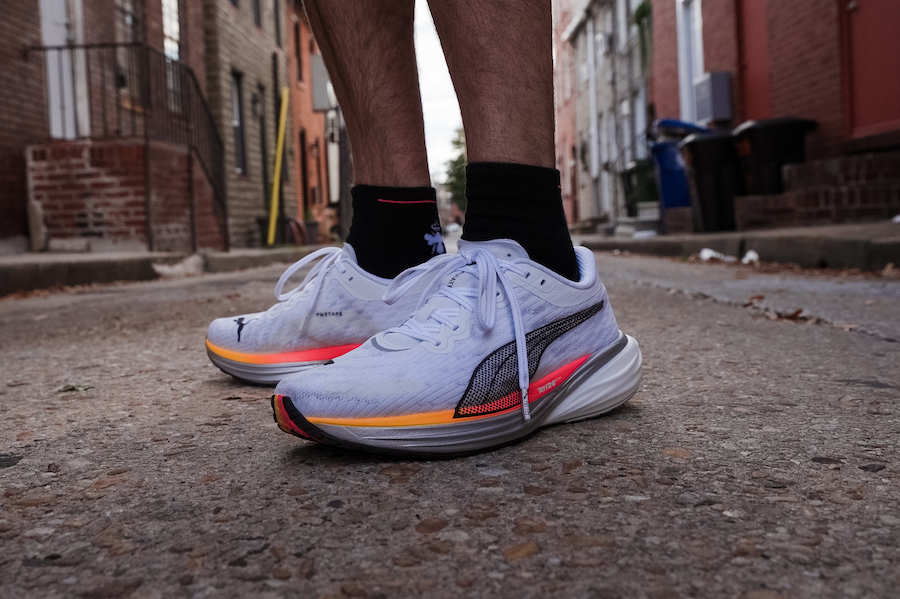
THE GOOD
THOMAS: Credit where it’s due—Puma clearly took runner input to heart by swapping out the problematic heel structure for a more conventional, well-padded design that performs effectively. The result? No more heel instability or irritation to worry about. The upper features a sophisticated blend of lightweight, breathable mesh in the forefoot and a denser weave for added support where needed. A strategic strip of PWRTAPE along the arch side maintains stability without extra bulk. The tongue, with its subtle padding and integrated gusset, blends seamlessly, providing a secure fit. In short, the upper delivers flawlessly: it runs true to size, promotes airflow, and avoids any pressure points. Even the lacing system is unremarkable in the best way—no complaints here.
Puma’s Nitro foams have earned their reputation, and the Deviate Nitro 2 takes it further. While the standard Nitro in the prior model was adequate, the new full-length Nitro Elite layer offers superior softness and energy return, enhancing the overall feel. To balance this, Puma incorporated a secondary layer of standard Nitro in the heel for optimal support. Nestled between these foams is a carbon composite Pwrplate, which not only boosts forward propulsion during push-off but also improves the shoe’s stability across various surfaces. This combination draws from advancements in material science, where carbon plates are known to increase efficiency in mid-distance runs by up to 5-10% in energy return, according to industry studies.
As expected, the shoe sits on Puma’s reliable Pumagrip outsole, a compound that’s consistently ranked among the top for traction and longevity in running circles. Puma claims this iteration features an optimized formula for even better performance—though the exact enhancements aren’t detailed, our tests confirm it holds up exceptionally well on diverse terrains.
BRANDON: Heading into this evaluation, I didn’t expect much, as Puma’s offerings have typically been competent but not outstanding. Yet, the Deviate Nitro 2 shifts that narrative. The Nitro Elite foam infusion provides the perfect mix of plush cushioning and lively rebound that I crave for daily miles. Paired with the carbon-infused plate, it delivers the right amount of support and a dynamic push-off, making transitions feel effortless and quick.
This model stands out as a versatile daily companion—lightweight enough for easy runs, yet responsive for speed work or tempo sessions. The upper offers a comfortable embrace with excellent midfoot security, thanks to the gusseted tongue that locks in without pinching.
Down at the outsole, Puma Grip continues to impress as a leader in the field, offering durability that extends beyond 400 miles while maintaining superior grip on wet or uneven paths. I was particularly struck by how confidently the shoe handled sharp turns, a testament to its enhanced traction design.
MEAGHAN: The team has already touched on the key points, so I’ll keep it concise. From the first step, the shoe feels inviting, fitting accurately and accommodating wider feet with ease. The bolstered padding in the heel and collar addresses past issues, eliminating any slippage or discomfort. It took a run or two to fully appreciate, but now the Nitro Elite foam and Pwrplate combo delivers an engaging, energetic ride that keeps me coming back. As for the outsole, Puma Grip’s renowned stickiness remains unmatched, providing reliable performance across the board.
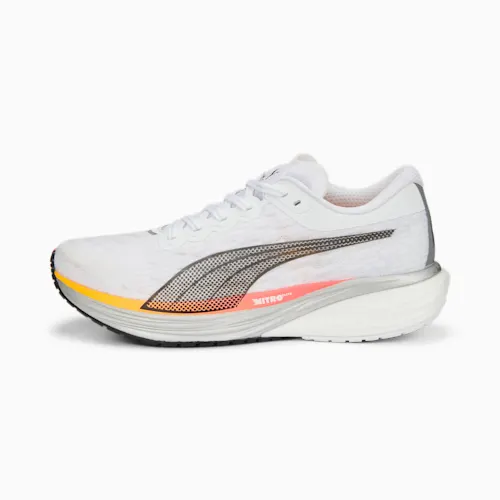

THE BAD
THOMAS: Puma has effectively resolved all the gripes I had with the initial version, leaving little room for criticism. This shoe excels as a daily trainer. Initially, the toebox felt a tad snug on my first outing, but it either adjusted quickly or a simple lace adjustment fixed it—no ongoing problems.
BRANDON: Finding faults here is a challenge; I had to look hard. At $160, it’s on the premium side for a standard trainer, though not exorbitantly so. In my view, pricing it around $130-$140 could have made it an irresistible value, potentially boosting its market appeal given the competition.
MEAGHAN: Echoing the others, there’s not much to fault. However, since Puma positions this as their most cushioned option, I wouldn’t mind seeing additional foam layers for even greater underfoot protection on longer outings.
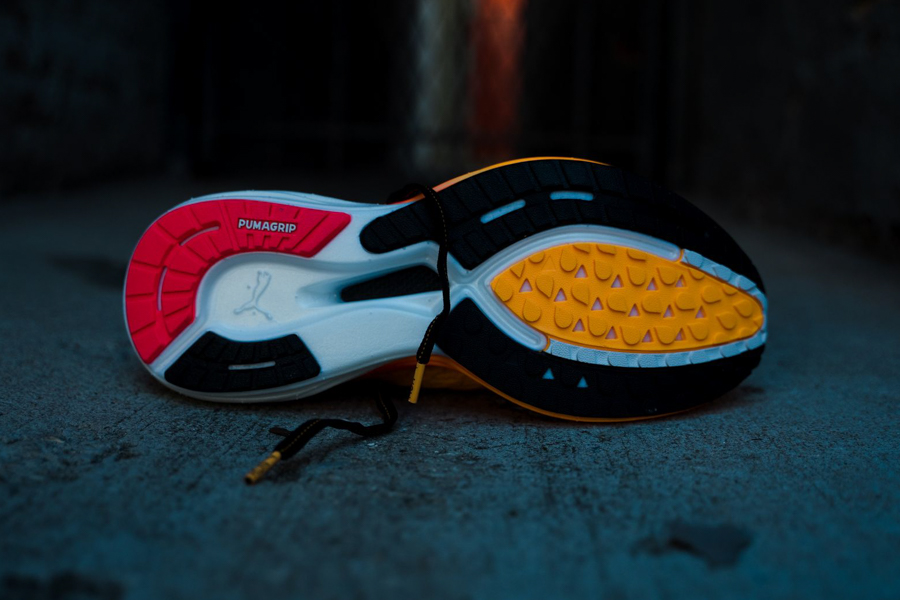
PUMA DEVIATE NITRO 2 CONCLUSION
THOMAS: Puma has delivered a standout performer with the Deviate Nitro 2, positioning it as a serious candidate for the best daily trainer of the year. It checks all the essential boxes: a durable, ventilated upper that fits perfectly, a responsive cushioning system suitable for any mileage, enhanced by a plate for added dynamism, and an outsole that excels in grip and versatility. Visually, it’s sleek and appealing, with no real drawbacks to note. At $160, it sits toward the higher end for non-plated daily shoes but remains competitive against plated rivals.
For context, this model holds its own against options like the Saucony Endorphin Speed 3, which retails at a similar price and offers comparable features, though Puma’s foam technology provides a unique edge in energy return, as evidenced by user feedback and performance metrics from running labs.
BRANDON: In terms of adaptability and dependability, the Puma Deviate Nitro 2 covers about 90% of a runner’s needs. Its aesthetic appeal is matched by the superior ride from the Nitro Elite foam, ensuring smooth strides and efficient turnover. If you’re already a fan of Puma’s lineup, this one is sure to become a staple.
MEAGHAN: Consensus among the team is a strong endorsement, and the Deviate Nitro 2 has quickly become a go-to in our regular rotation. That level of agreement speaks volumes about its quality and performance.
The Puma Deviate Nitro 2 is available for $160, offering a blend of innovation and practicality that’s worth considering for your next running purchase.
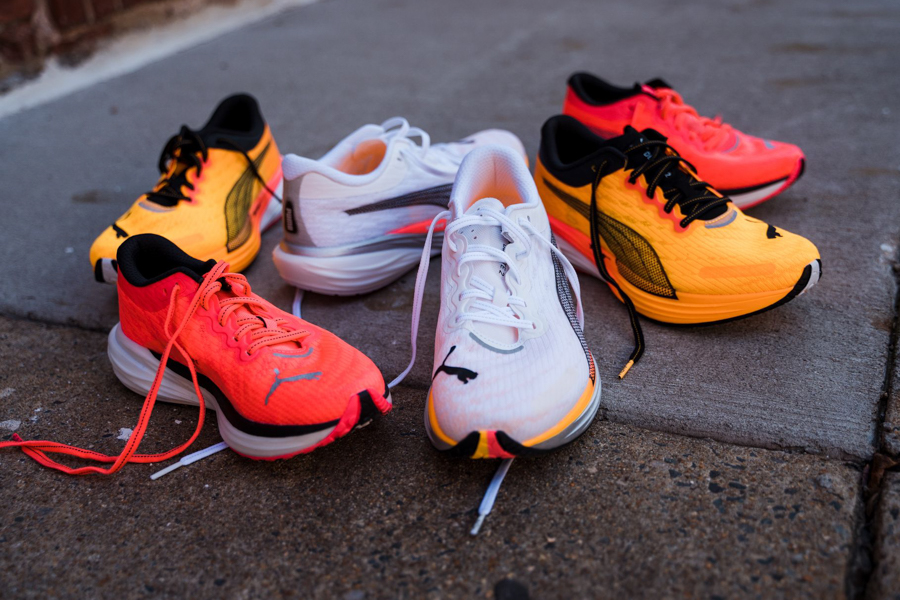

Culinary Adventurer: Savoring Delicacies from Around the World
Are you ready to embark on a delectable journey across the globe? The world is a treasure trove of culinary wonders waiting to be explored. This article will be your guide, providing insights and tips for those who seek to become a “Culinary Adventurer.” From […]
Food & DrinkAre you ready to embark on a delectable journey across the globe? The world is a treasure trove of culinary wonders waiting to be explored. This article will be your guide, providing insights and tips for those who seek to become a “Culinary Adventurer.” From savoring exotic flavors to understanding the cultural significance of food, this gastronomic exploration will redefine your understanding of what it means to travel and eat. Let’s delve into this sumptuous adventure!

A World of Flavors
Exploring the Rich Tapestry of Global Cuisines
Culinary exploration is an invitation to embrace the diversity of flavors. Discover how each region has cultivated its unique dishes and cooking techniques, reflecting their history, climate, and available ingredients. From the fiery curries of India to the delicate sushis of Japan, there’s a world of taste to explore.
Unearthing Hidden Gems
Learn how to seek out the lesser-known gems within a culinary culture. These hidden treasures often reside outside the tourist areas, waiting to surprise your taste buds. Explore local markets and small eateries where authenticity thrives, providing you with a genuine culinary experience.
Culinary Travel Experiences
Immersion in Local Food Culture
Immerse yourself in the local food culture to understand the people and their way of life. Participate in age-old cooking traditions, attend food festivals, and dine with locals to gain insights into their culinary heritage.
Culinary Tours and Cooking Classes
Join organized culinary tours and take cooking classes in foreign countries. These experiences provide a structured approach to your culinary adventure, ensuring you get the most out of your travels while honing your cooking skills.
Taste Buds on a Journey
Experiencing Unfamiliar Tastes
Challenge your taste buds with new and unusual flavors. From the pungent durian in Southeast Asia to the earthy truffles in Europe, prepare to be amazed by the sheer diversity of tastes the world has to offer.

The Role of Spices and Herbs
Learn how spices and herbs are the heartbeat of many cuisines. Discover how these flavorful ingredients can elevate a dish and create a memorable dining experience.
Beyond the Plate
The Cultural Significance of Food
Food is more than sustenance; it is a reflection of culture. Understand how the preparation, sharing, and consumption of food are woven into the fabric of society, revealing stories that extend beyond the plate.
Culinary Diplomacy
Explore the concept of culinary diplomacy and how food can foster understanding and peace between nations. Delve into examples of food’s role in building bridges across cultures.
A Culinary Adventure at Home
Recreating International Flavors in Your Kitchen
Can’t travel? Learn how to bring international flavors to your kitchen. Experiment with recipes from different regions, turning your home into a global culinary playground.
Virtual Food Experiences
Discover the world of virtual food experiences, where you can learn about and savor international dishes from the comfort of your home through online classes and tastings.
The Impact of Food Tourism
Economic Benefits
Uncover how food tourism contributes to the local economy by boosting restaurants, markets, and food-related businesses.
Promoting Sustainability
Explore the significance of responsible food tourism and how it can help protect culinary traditions, environments, and resources.
Culinary Adventurers’ Toolkit
Research and Planning
Master the art of planning a culinary adventure. From researching destinations to creating an itinerary, we provide a comprehensive guide.
Essential Tips and Precautions
Ensure your safety and enjoyment during your culinary journey with these essential tips and precautions.
Personal Stories
Memorable Encounters with Global Cuisine
Read firsthand accounts of culinary adventurers who have experienced the magic of international cuisine and the unforgettable moments they’ve had along the way.
Culinary Adventure Anecdotes
Enjoy anecdotes from travelers who have tasted their way around the world, sharing stories that highlight the joys and challenges of such a journey.
The Fusion of Flavors
Cross-Cultural Culinary Innovations
Discover the fusion of flavors, where global cuisines meld together to create innovative and exciting dishes that defy traditional boundaries.
Fusion Restaurants and Culinary Experiments
Visit fusion restaurants that blend cultures, tastes, and culinary techniques, offering a truly unique dining experience.
An Ode to Street Food
Iconic Street Food Destinations
Experience the thrill of sampling street food in diverse cities and uncover hidden street food gems worth exploring.
Street Food Culture and Experiences
Dive into the vibrant world of street food culture, where you can interact with locals and savor the true essence of a region.
Challenges and Rewards
Overcoming Language Barriers
Learn how to navigate language barriers while dining abroad, turning potential challenges into enriching experiences.
The Satisfaction of Cultural Understanding
Discover the immense satisfaction of truly understanding the culture and people behind the food you enjoy.
Top Culinary Destinations
A World Tour of Culinary Hotspots
Embark on a culinary tour, stopping at some of the world’s most renowned food destinations, from the streets of Bangkok to the markets of Marrakech.
Unexpected Food Capitals
Explore lesser-known food capitals that are waiting to surprise you with their unique culinary offerings.
Sustainability and Responsibility
Preserving Food Traditions
Learn how responsible food tourism can help preserve culinary traditions, ensuring that future generations can savor these authentic flavors.
Ethical Considerations in Food Tourism
Discover the ethical aspects of food tourism, including supporting local communities and reducing your carbon footprint.
Conclusion
In conclusion, being a “Culinary Adventurer” is about more than just eating. It’s a journey that allows you to savor the world’s flavors while gaining insights into the diverse cultures that create these delectable dishes. Embrace the adventure, and let your taste buds guide you on a culinary exploration that knows no bounds. The world is your oyster, and every plate is an opportunity to connect with the global community through the universal language of food.
Frequently Asked Questions (FAQs)
- What’s the best way to prepare for a culinary adventure?
- Prioritize research, create an itinerary, and be open to new experiences.
- How can I find authentic local eateries while traveling?
- Consult locals, explore markets, and use food-related apps to discover hidden culinary gems.
- What are some must-try street foods from around the world?
- Try Pad Thai in Thailand, Tacos in Mexico, and Peking Duck in China, to name a few.
- Is it important to learn about food etiquette in different cultures?
- Absolutely! Understanding local food customs can enhance your dining experiences and show respect for the culture.
- How can I balance trying new foods with dietary restrictions or allergies?
- Communicate your restrictions clearly, research in advance, and always carry necessary medications or dietary supplements.
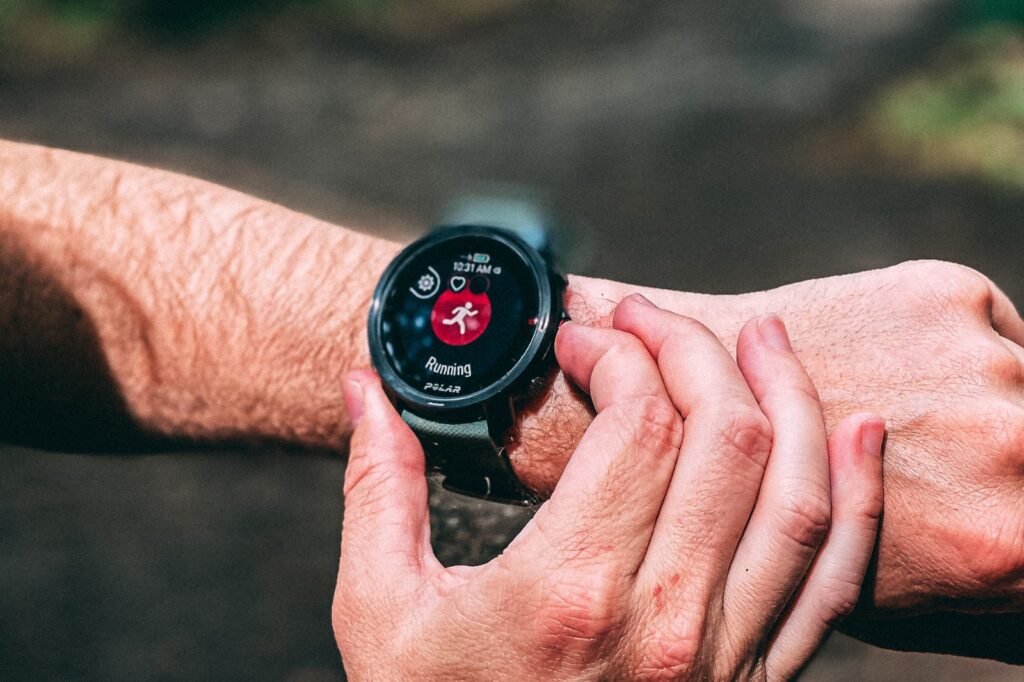
Heart Rate Training: How It Works
WHAT IS MAF TRAINING? Many times, heart rate training is synonymous with MAF training, but there are several components that separate the two. MAF stands for Maximum Aerobic Function: our ability to burn body fat for nearly unlimited energy. A key focus of MAF training […]
NutritionWHAT IS MAF TRAINING?
Many times, heart rate training is synonymous with MAF training, but there are several components that separate the two. MAF stands for Maximum Aerobic Function: our ability to burn body fat for nearly unlimited energy. A key focus of MAF training is to maximize natural fat-burning, which directly improves your health and fitness.
Improving your fat burning abilities can be done in a variety of ways, such as training at the right intensity, monitoring nutrition intake in a healthy and sustainable way, and managing stress levels.
While most training methods focus on variation of workouts in concert with nutrition and proper fueling, the MAF method starts at the foundation of fitness, focusing on the importance of developing your aerobic base fitness first. This is accomplished through low heart rate training, and only moves onto higher intensity running once a baseline aerobic fitness is established. In doing so, athletes are able to get faster without the common wear, tear and injury that plagues most runners.
Over time, the goal is to run faster at the same (or lower) heart rate, both in training and racing.
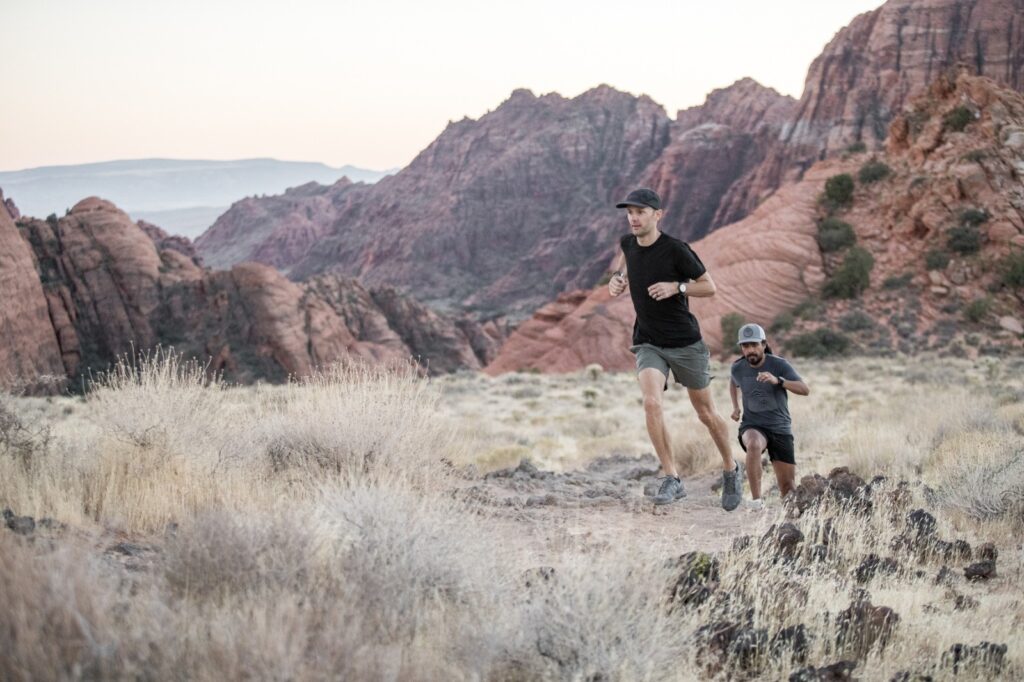
BENEFITS OF LOW HEART RATE TRAINING
There are many benefits to lowering your training intensity (otherwise, why would we do it?). Here are the core benefits:
➤ IMPROVED ENDURANCE
By training at a low heart rate, your body becomes more efficient at using oxygen to produce energy, leading to improved endurance over time. Training at a low heart rate increases the number of your mitochondria (part of a cell that makes energy) and improves their efficiency. The more mitochondria you have, the more energy you can create from fat burning. This means you can run faster at the same (or lower) heart rate.
➤ IMPROVED FAT BURNING
Low heart rate training teaches your body to burn more fat for fuel, which can improve overall health, resulting in weight loss and improved race times. Since you have a nearly unlimited supply of fat, aerobically fit athletes who pace themselves well can still have energy left at the end of their race, at a time when many runners are forced to slow down significantly.
➤ LOWER CHANCE OF INJURY
You are able to train consistently at higher training volume, with limited training stress on your body. Training at a lower intensity reduces the stress on the body’s joints, muscles, and tendons, reducing the risk of injury.
➤ FASTER RECOVERY
When you finish a low heart rate run, you should feel like you could do that run again. Low heart rate training can help the body recover more quickly after intense workouts, leading to improved performance over time.
➤ INCREASED MENTAL CLARITY
Training at a low heart rate can be a meditative and relaxing experience, leading to improved mood, mental clarity, and reduced stress.
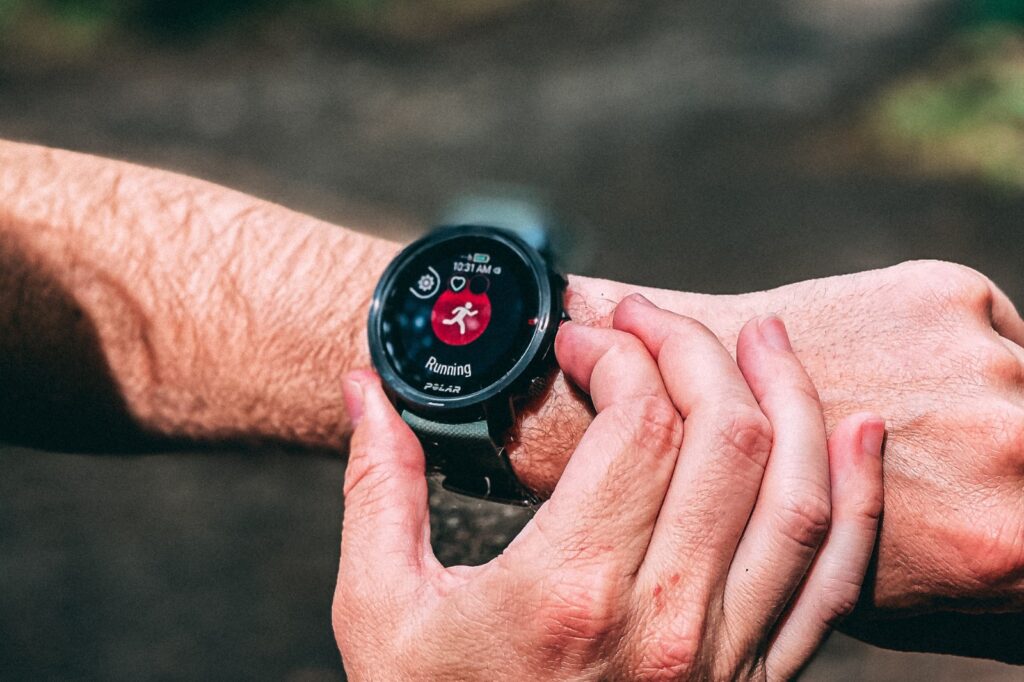
MAF TRAINING: MORE THAN LOW HEART RATE TRAINING
One misconception with MAF training is that it’s low intensity training only. There is absolutely a time and place with higher intensity training as well, but only after an aerobic base has been developed. Dr. Phil Maffetone, one of the foremost voices on heart rate training, also talks about this on his website FAQ:
“Train MAF until you plateau, or until you have been improving for 3-6 months. Then you add some speedwork. Most people respond well when their volume of anaerobic training is 15-20% of their total training while 80% is at or under MAF.”
The 80/20 rule applies to a variety of practices across a range of subjects, and the same is true for MAF training. For those unfamiliar with the rule, in the case of MAF training, 80% of runs will be done at an easy, aerobic pace, while 20% are done at a harder effort. This practice is used by plenty of elite athletes, from Tommy Rivs to Kilian Jornet to Eliud Kipchoge (a majority of his training is done 3-4 minutes slower than his race pace!). However, in the case of MAF training, the 80/20 rule begins only when the base-building phase is complete.
I prefer the MAF training approach of base building first for 3 months, before adding in speedwork, instead of right away jumping into 80/20. I see too many injured, unhealthy, overtrained athletes. Yes, even 20% high intensity running can bring too much training load too soon for athletes, especially if the stress levels in your daily life outside of running are already high. I have personally experienced this and seen this in many athletes through my coaching practice.
Does that mean you can’t do any high intensity or group runs during your base building? From a running coaching perspective, I look through the lens of bringing joy and consistency to athletes training. By all means, during your base-building phase, if you want to do one higher intensity run a week to blow off steam or catch up with your running group, go for it. For some runners, this helps to be disciplined enough to run the rest of their weekly runs at low enough intensity. However, I can’t stress enough that it’s important to not overdo the high intensity in this phase. Base building can be surprisingly slow for most runners, and it’s often too tempting to pepper in high intensity runs. Doing so will nullify the entire process and will return mediocre results, if any at all.
During base building, you develop your slow-twitch aerobic muscle fibers and you strengthen your joints, bones, ligaments, tendons and anaerobic fibers. This base building strengthens your body so it can handle more training load in the forms of training volume and intensity.
Dr. Phil Maffetone’s philosophy is a holistic approach to training, racing, and even life. Everything is connected. Your running intensities, nutrition, stress levels, sleep quality and recovery all play a massive role in your athletic performance. Many athletes, including myself 10 years ago, only focus on the running component and forget about the rest.
HOW DO I FIND MY HEART RATE TRAINING ZONE?
There are a few different ways to find out your optimal training intensity for aerobic exercise. Some common used options are:
➤ DO A BLOOD LACTATE TEST
Simply put, this is the most accurate way to determine your Zone 2 range for aerobic training. The goal with a blood lactate test is to find the highest heart rate that you can sustain while keeping your lactate level below 2.0 millimole per liter. A medical lab test can cost $150 to $250+ or you can use your own (expensive) device with test strips. This is not needed to start out with low heart rate training, but if you want the most accurate measurement and don’t mind paying for it, then go with this.
Keep in mind that this is just one data point. If you have an off-day on your LT test, you could set your training zones incorrectly as well. I’ve had to re-do an LT test in the past for inaccurate results, due to poor sleep/high stress the day before.
➤ USE A HR TRAINING ZONE CALCULATOR
A fairly accurate and easy way to find your aerobic range (Zone 2) is to use a heart rate training zone calculator, like this one courtesy of Mottiv and Triathlon Taren. He also includes a simple workout to find your max heart rate.
➤ USE A TALK TEST
Do a 15-20 minute warm up, and then keep running at a conversational pace. You should be able to have a comfortable conversation, yet the other person should notice you’re exercising since you sound a bit breathy. Look at what your heart rate is while you’re running. That said, this is probably the least accurate way to get your Zone 2 number since it’s highly subjective.
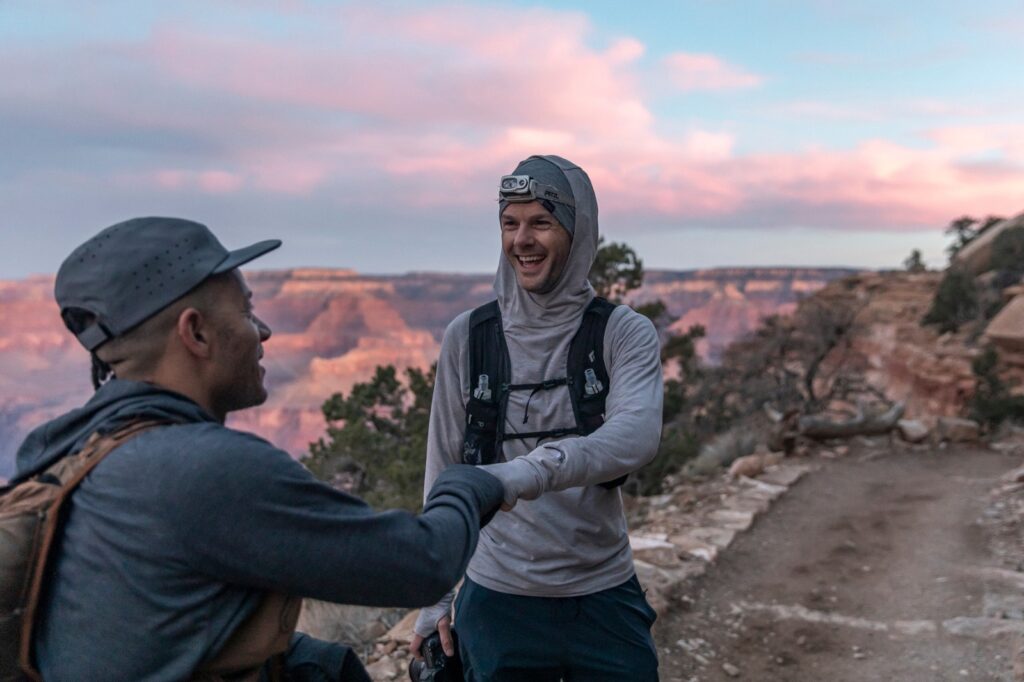
➤ USE DR. PHIL MAFFETONE’S 180 FORMULA
This formula gives a ballpark number for your Zone 2 heart rate and takes your age, health, and fitness profiles into account. That said, the MAF 180 formula is not accurate for everyone. For me, my blood lactate test was exactly the same number as the MAF 180 formula; however, for other athletes there can be a significant difference. For example, if you have an exceptional high max heart rate for your age, or if you’re an athlete over the age of 55, then further personalization may be needed by increasing your MAF training zone. Nevertheless, this simple formula will work reasonably well for most athletes.
Here is the calculation:
- Take 180 and subtract your age. This number is the max aerobic function of your Zone 2 range.
- Update this number with the best match of your fitness and health profile:
- For those recovering from a major illness, surgery or hospital stay, or are on regular medication, subtract an additional 10.
- For those who have been inconsistent in your training or are just getting back into training, or if you’re injured, have regressed in training and racing, if you get more than two colds or flus per year, have allergies or asthma, subtract an additional 5.
- For those who have been training consistently (at least four times weekly) for up to two years without any of the problems in (a) and (b), keep the number (180–age) the same. For example, if you are currently 45 years old and fit into this category, this shows 180-45=135 beats per minute, without further adjustments.
- For those who have been training for more than two years without any of the problems in (a) and (b), and have made progress in competition without injury, add 5.
With this formula your aerobic training zone is between your max aerobic function and 10 beats below it, so 125 to 135 bpm. Training above this heart rate quickly shifts your body to burn more carbs and less fat for fuel.
A more detailed explanation with FAQ in the comments can be found at Dr. Phil Maffetone’s website here.
The main reason I prefer the MAF 180 formula is that this formula takes an athlete’s health profile and fitness background into account. This means if you’re just starting out training with poor fitness, or are coming back from an injury, illness, overtraining or burnout, you should train at a lower intensity than when you’ve been healthy, injury free and consistently improving in training and racing.
The amount of athletes that get injured or overtrained are higher than ever. I’m a strong believer in optimizing health first and your running performance will follow. This is something that Dr. Stephen Seiler and I also talked about on The Extramilest Show #50.
I suggest starting out with the MAF 180 formula. If you want, you can also do the Talk Test and Heart Rate Training Calculator as well. This will give you three data points and allow you to see how these overlap or differentiate at the start of your training.
Oftentimes, runners who are new to MAF training will want to find a formula with the highest aerobic HR to train at, because their aerobic pace is painfully slow, sometimes 2-3 minutes slower than the pace they’re used to running. Whenever in doubt, I suggest starting out with the lower HR number first. Slowing down, or even taking walk breaks, is part of the process. It may even seem humiliating at first, especially if you’re used to Strava street cred, but it’s important to stick to the plan.
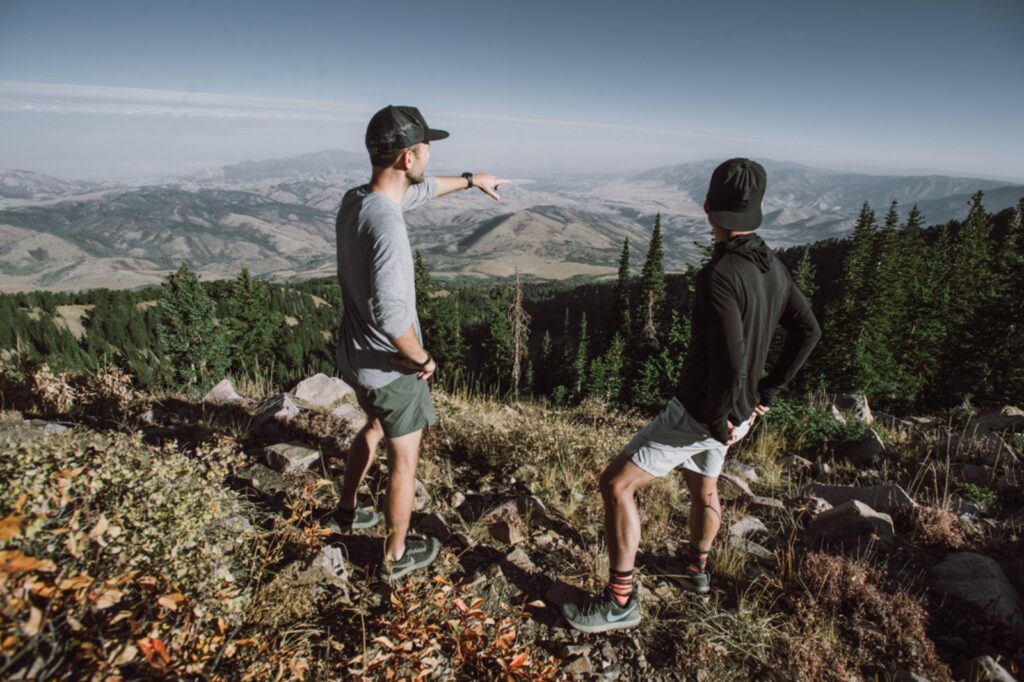
HEART RATE ZONES CHANGES CHANGE OVER TIME
In 2013, at the age of 30, I had to slow down significantly on my runs to keep my HR at or below my MAF heart rate of 150 beats per minute, averaging a pace of about 8:30 min/mile on flat.
In October 2022 at age 40, at the Chicago marathon, I finished in 2 hours 52 minutes (6:30 min/ mile) with an average heart rate of 149.
As we age, our heart rates naturally come down. Many MAF athletes will also notice that over time our bodies adapt and become more efficient. Getting to mile 20 (32 km) into a race and being able to run strong, passing many athletes and holding pace (or even picking up your pace a bit) is something not many endurance athletes ever experience. This is the best feeling in the world.
KEY TAKEAWAYS
Find your MAF heart rate. By using a combination of the methods above, you can narrow down your ideal zone 2 heart rate. It may seem painfully slow to run at a pace that holds your heart rate in zone 2, but it’s important to stick to the plan. Everyone who starts MAF goes through it.
Which brings us to our next point: discipline. There’s a time and place for high intensity training and the 80/20 rule, but not before your base-building period is complete. Generally, base building will take 3 months, though for others it may take longer. It seems long at first, especially since you’ll have to slow down significantly. However, three months in the grand scheme of your running life is a small sacrifice for a huge reward further down the road.
The benefits of heart rate training are numerous, and will affect every area of your life. I’ve seen it in my own running, and I’ve seen it in the lives of hundreds of other athletes through my coaching practice. When you’re less stressed and injury free and have more mental clarity, you’re able to truly enjoy running, which will spill over into all other areas of your life.
When all of these things come together, you’ll find that running returns more than you could’ve ever imagined.
